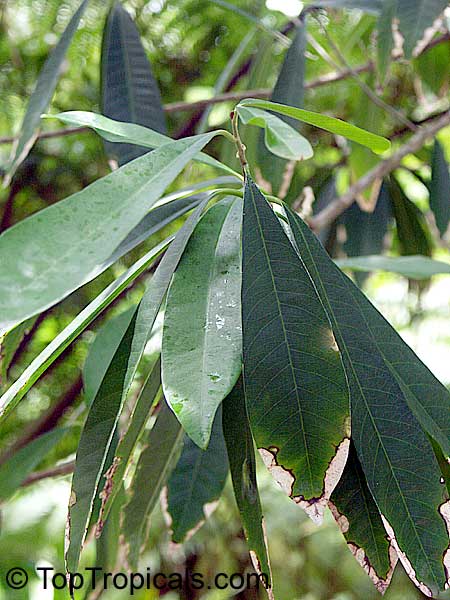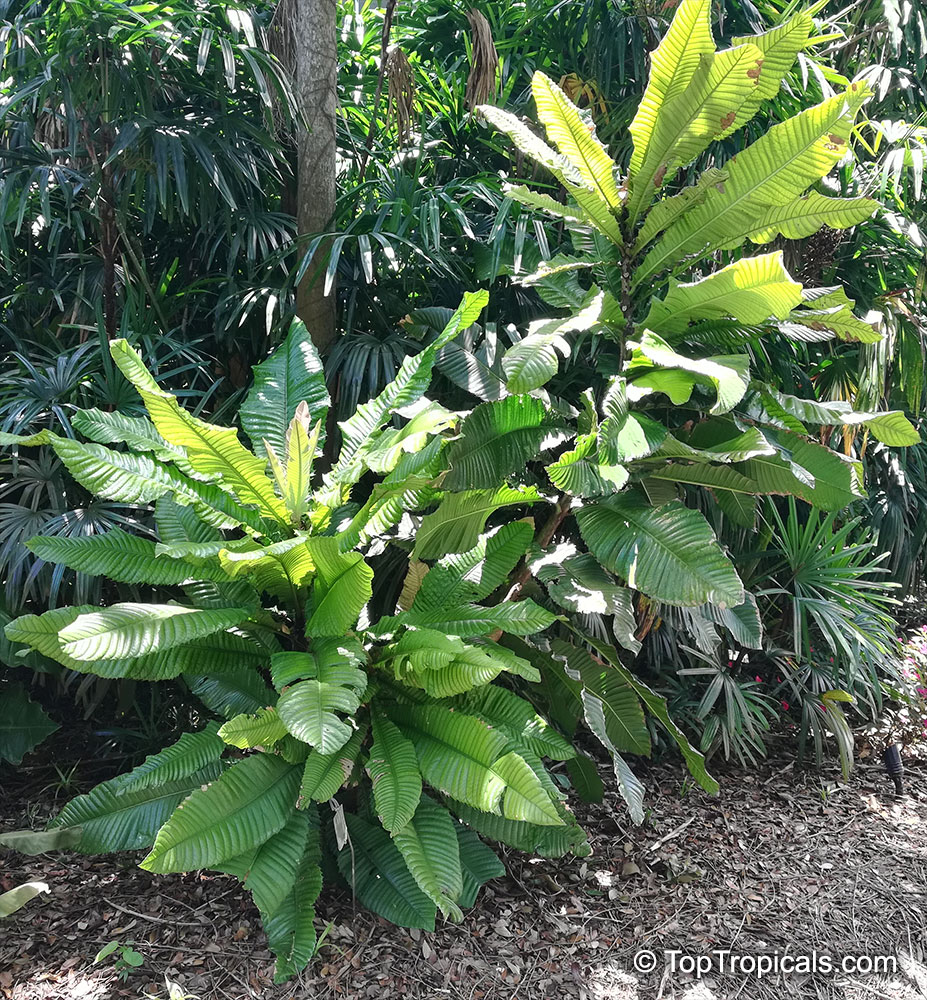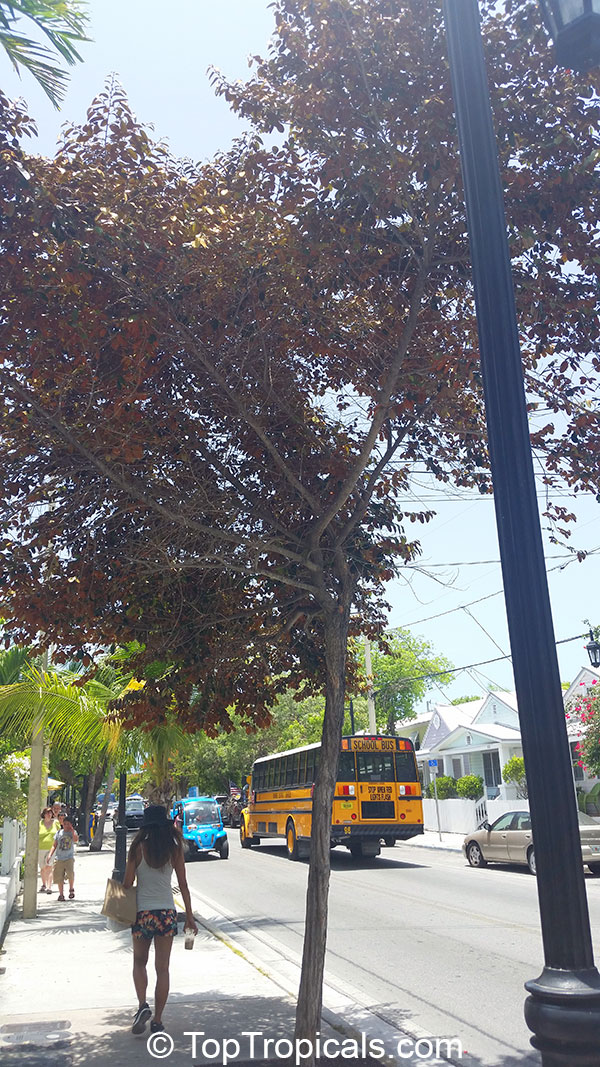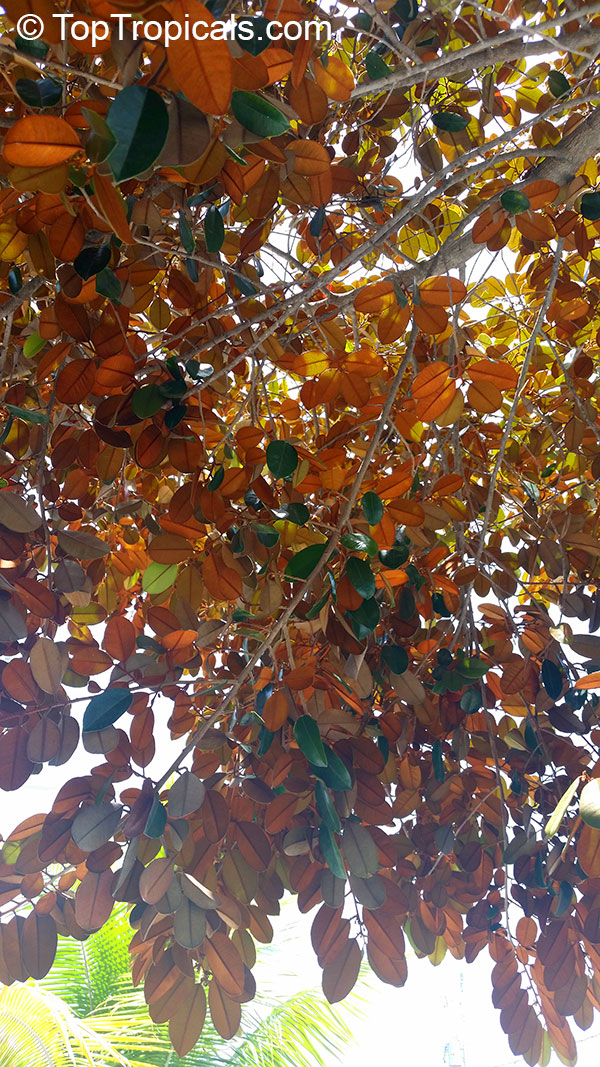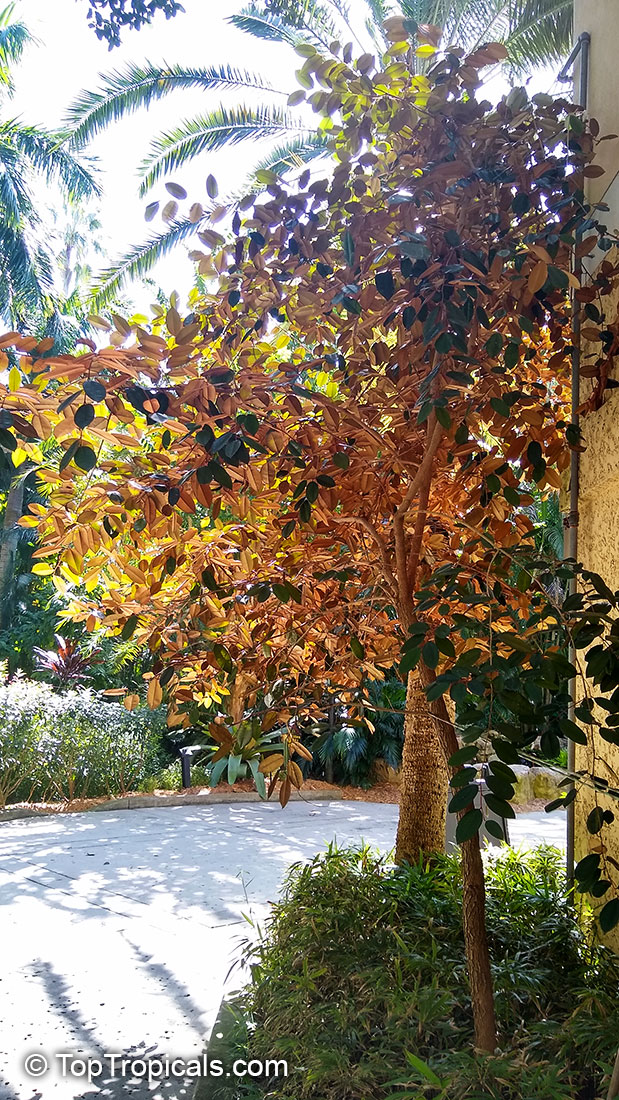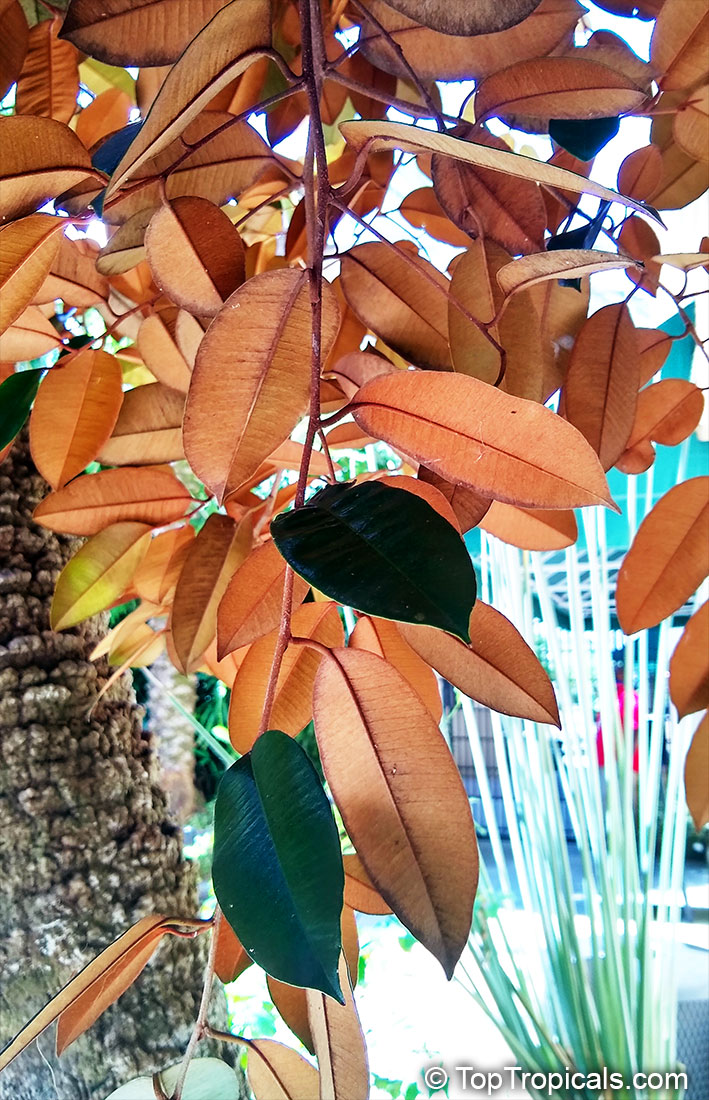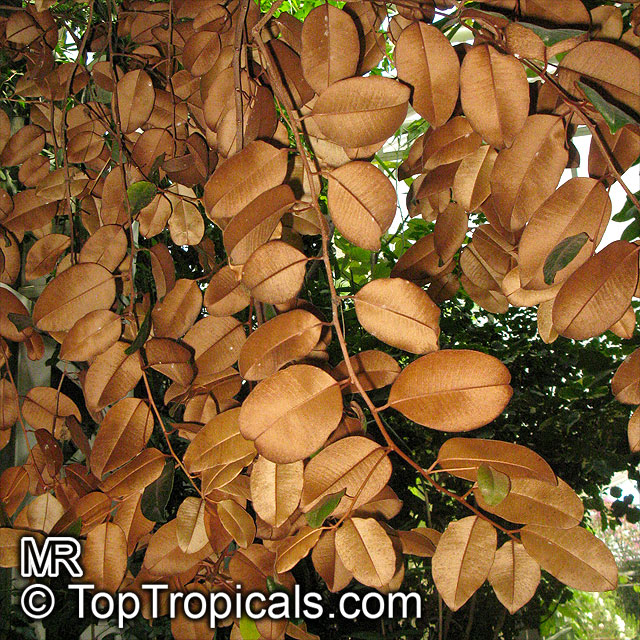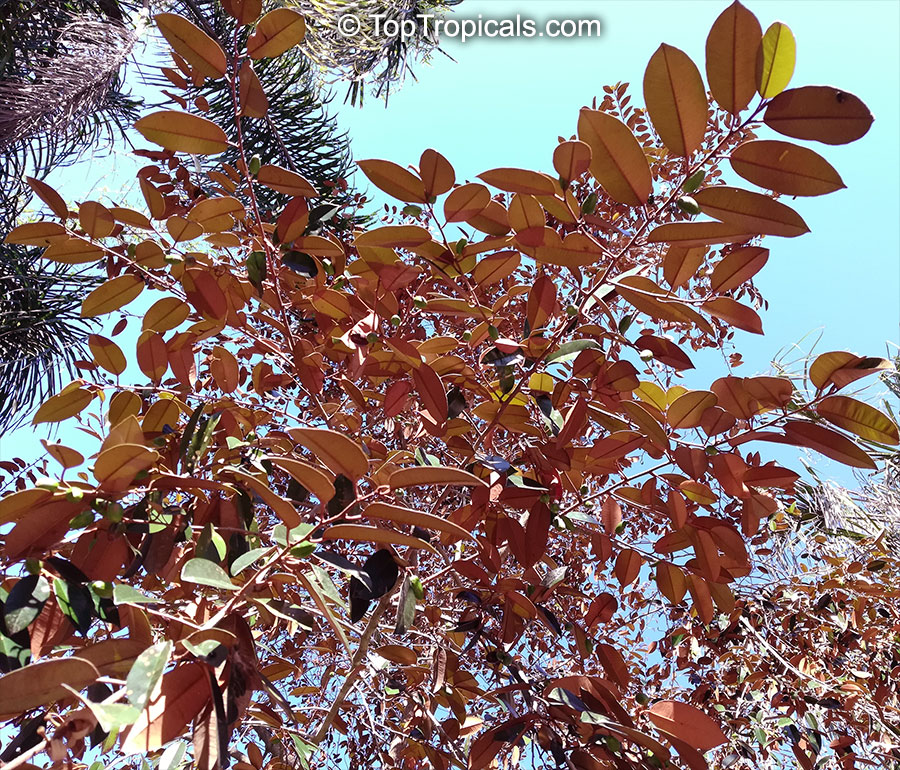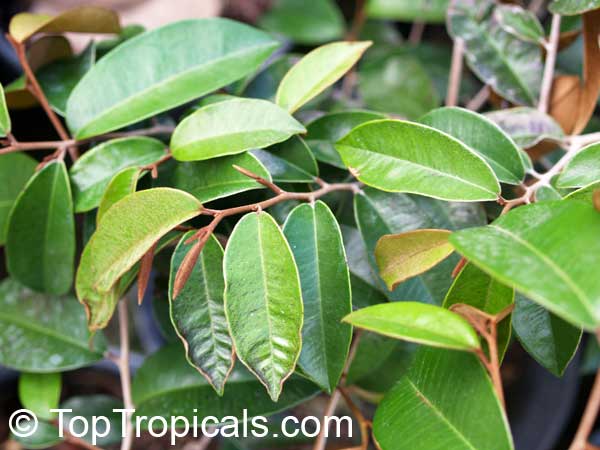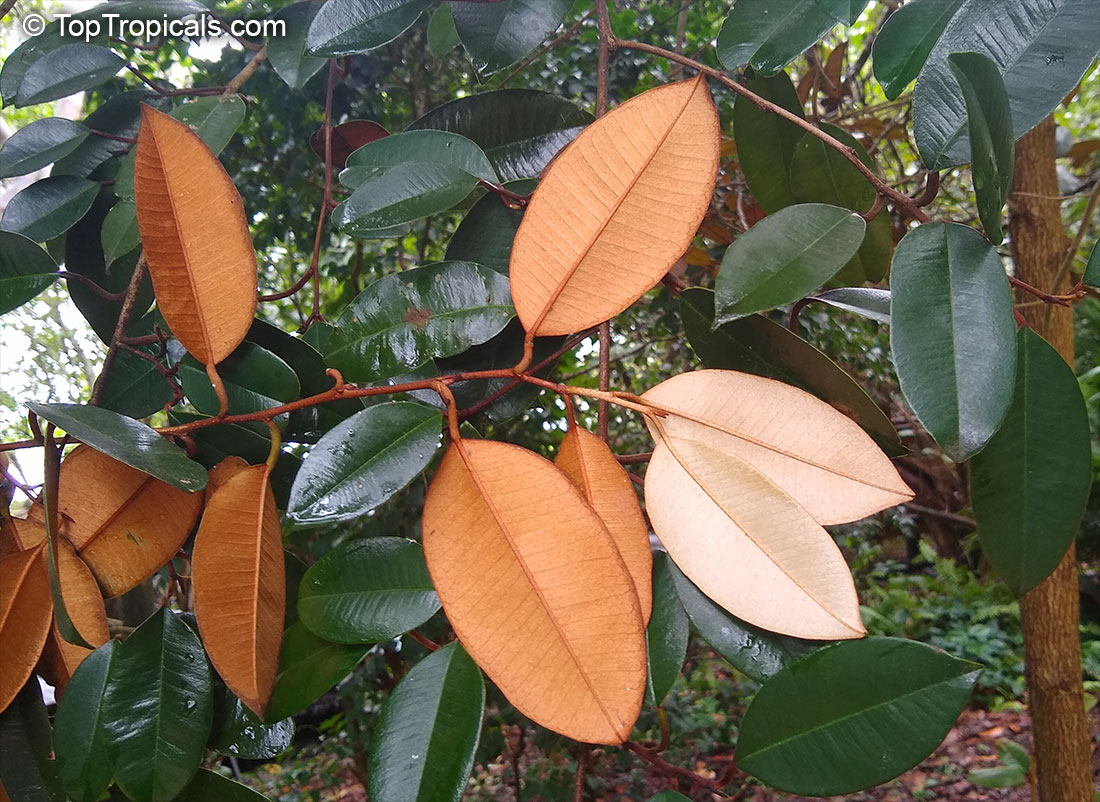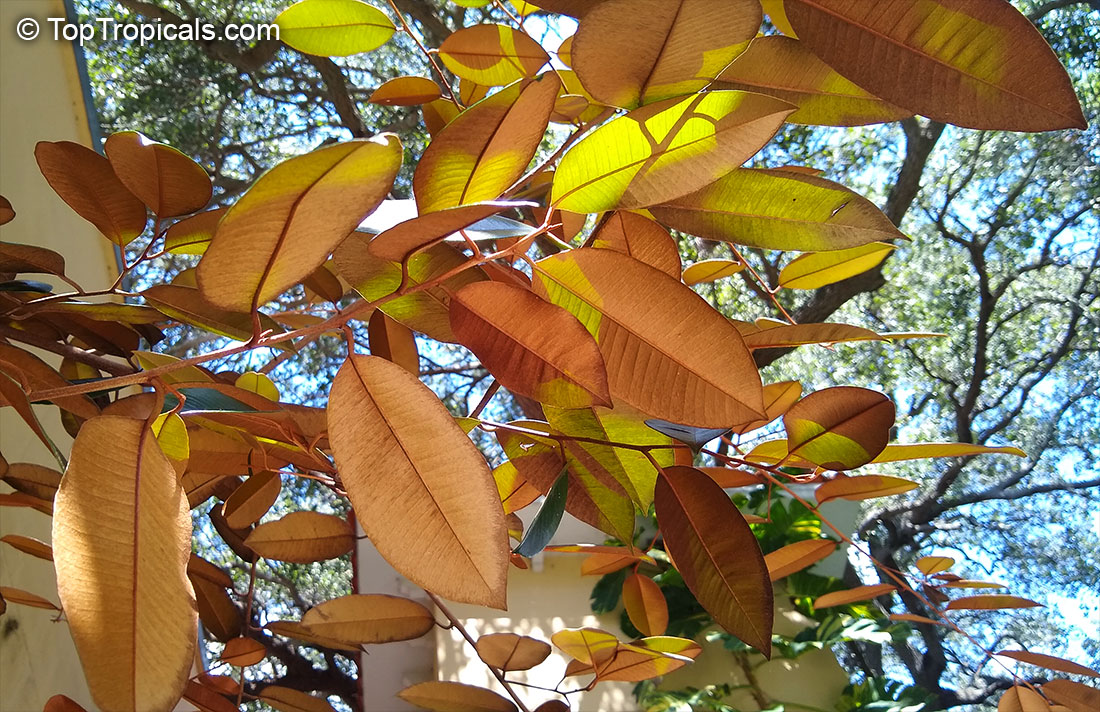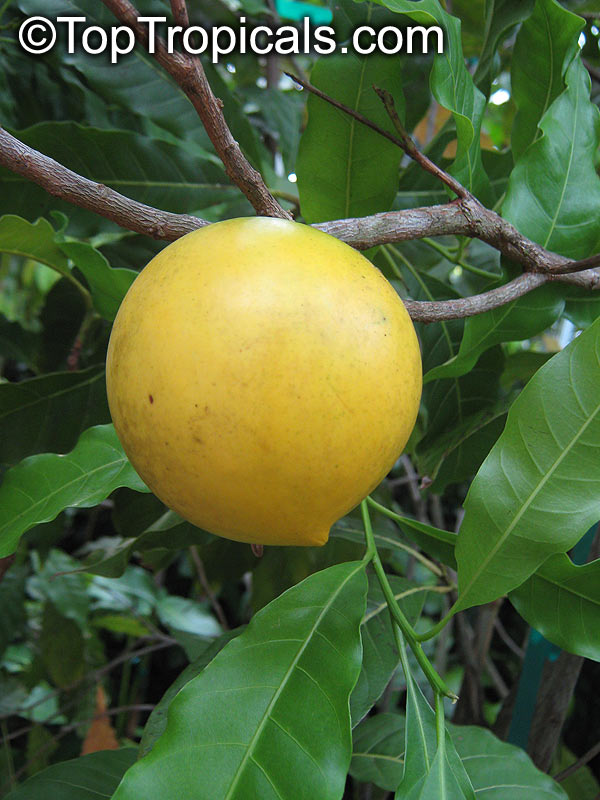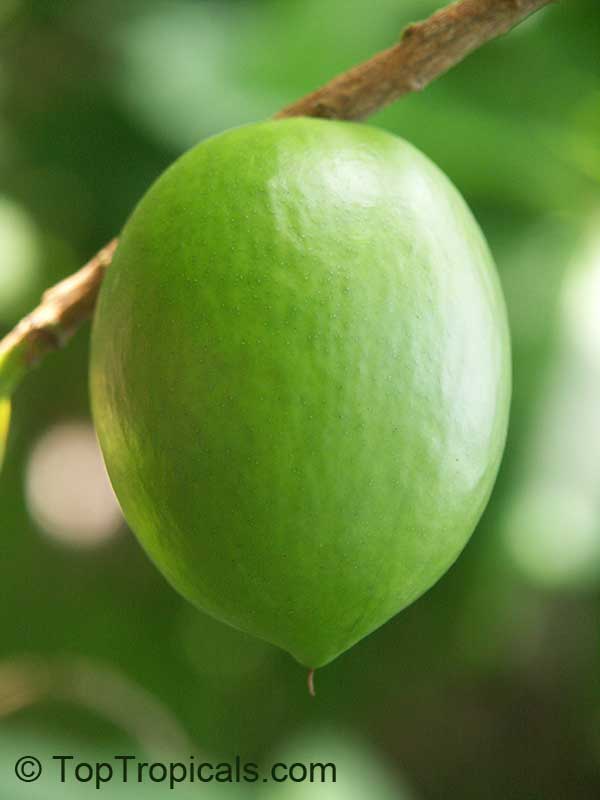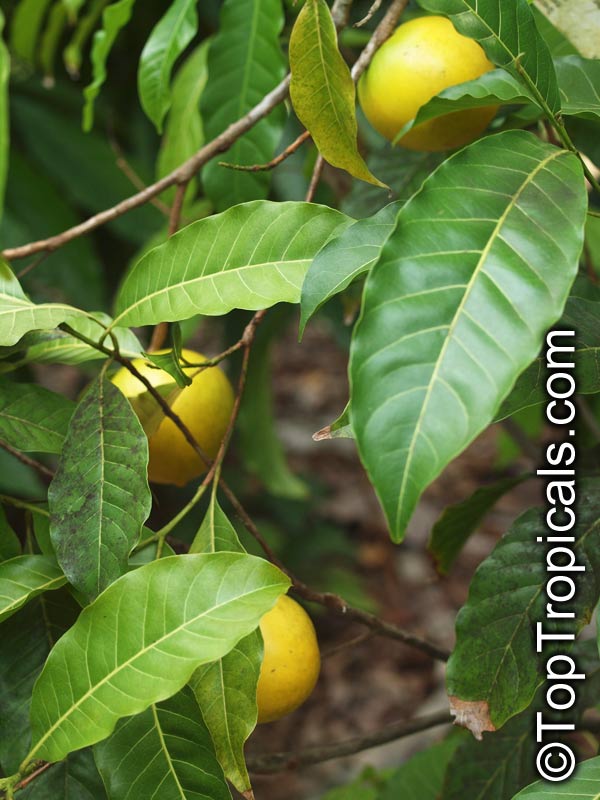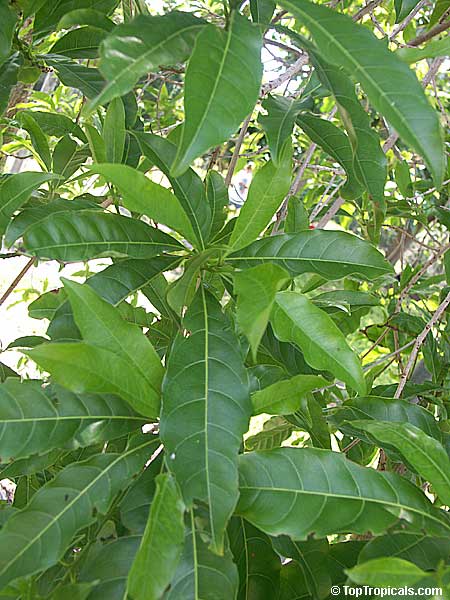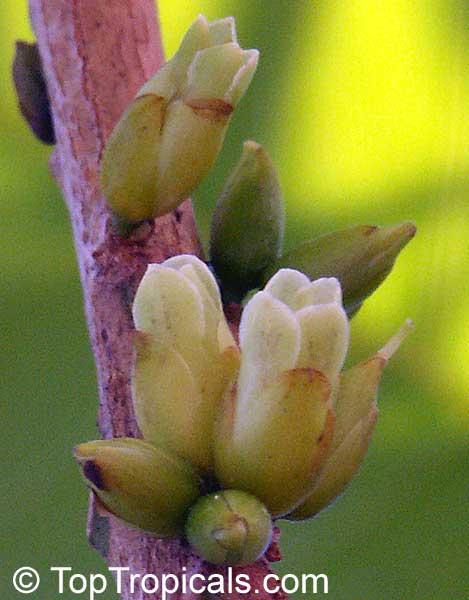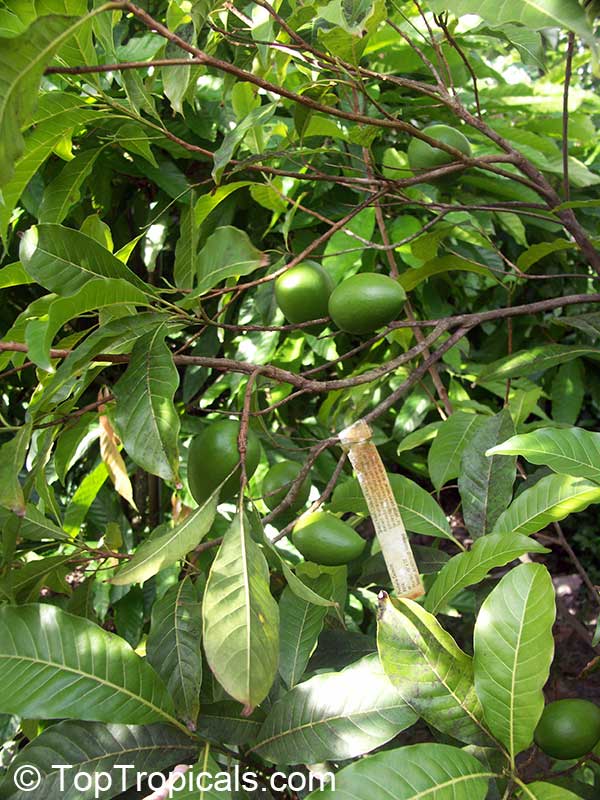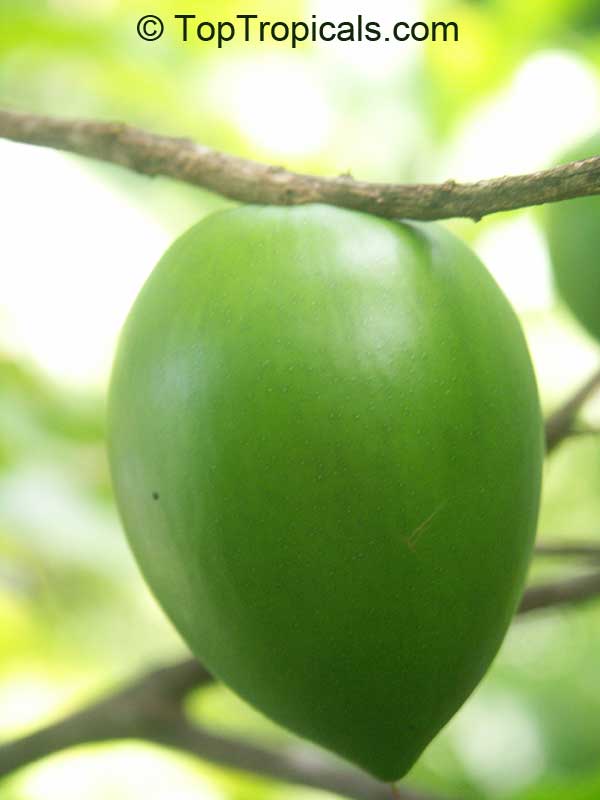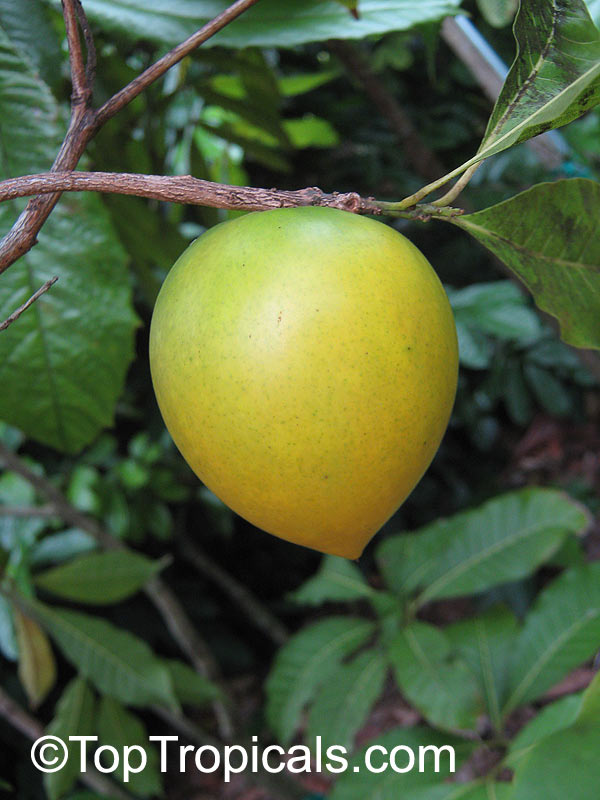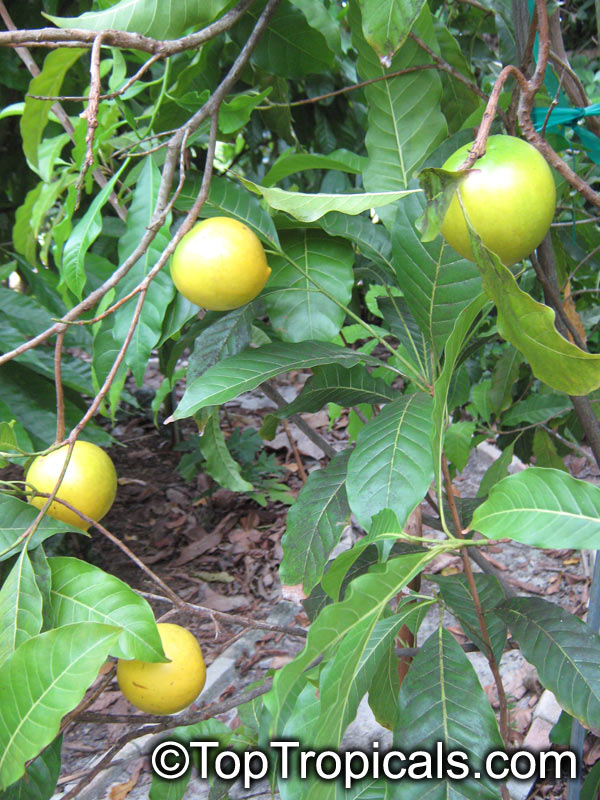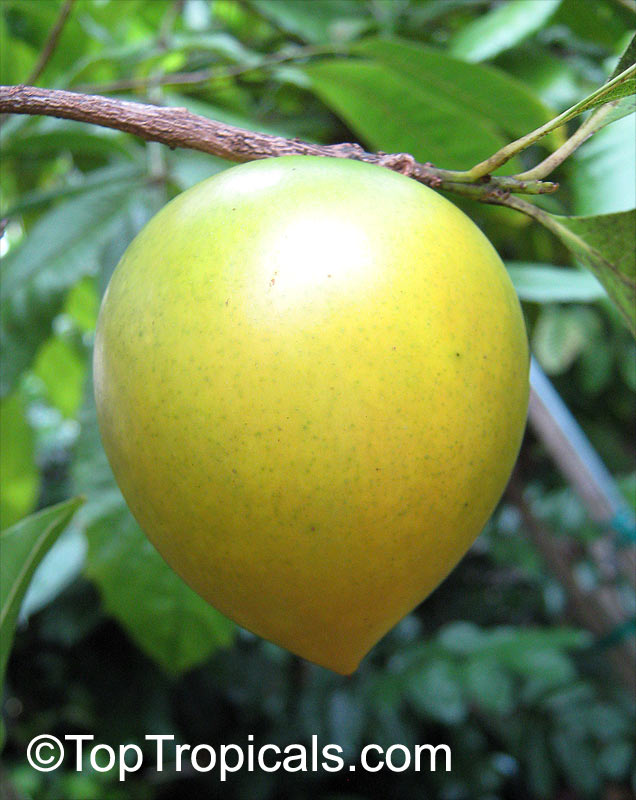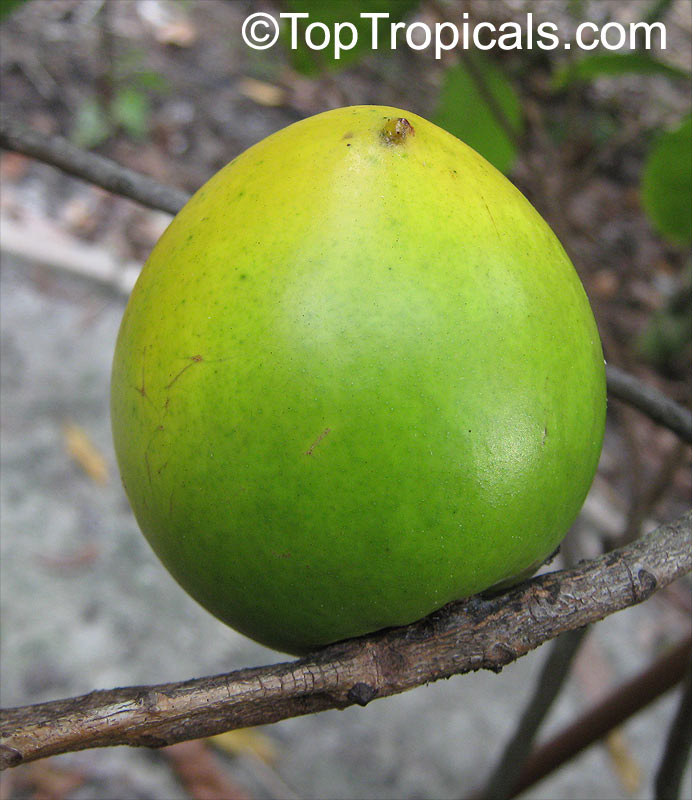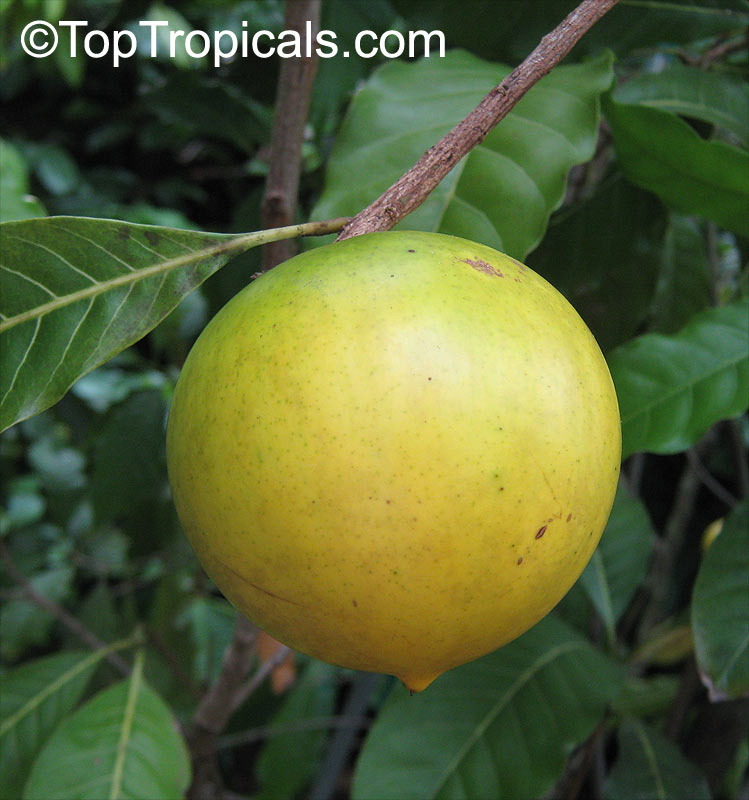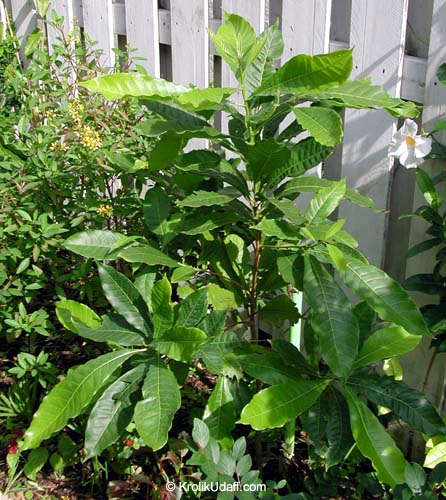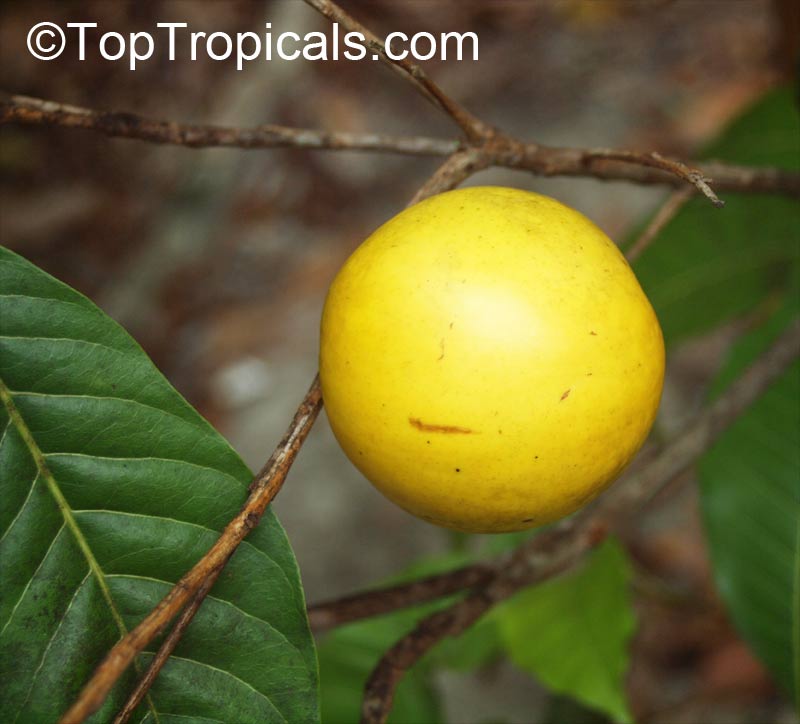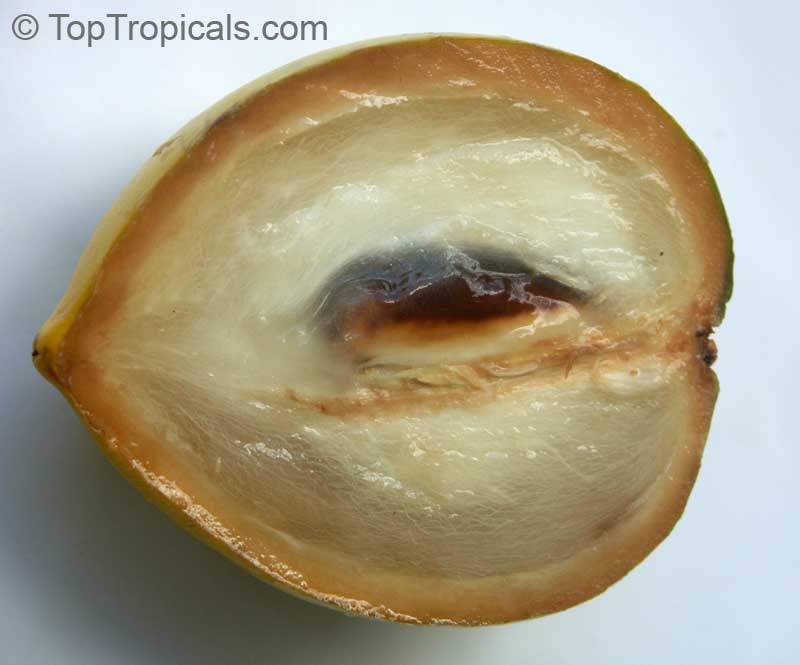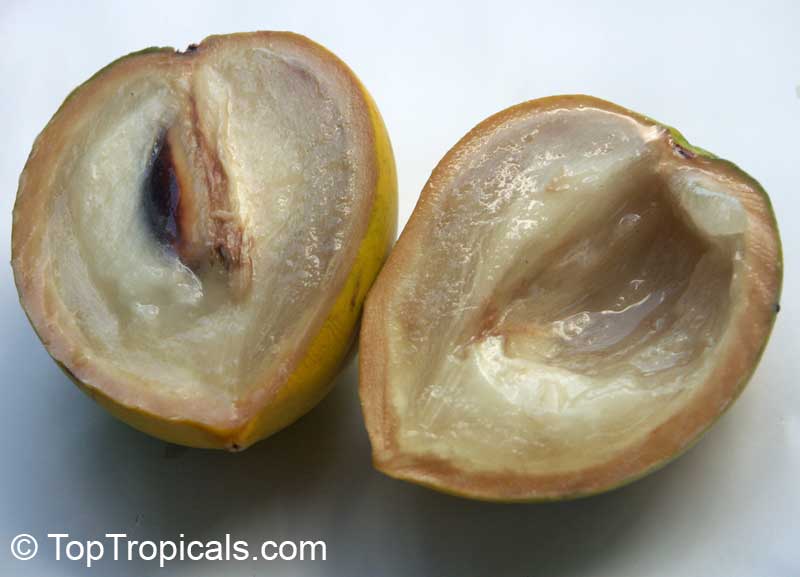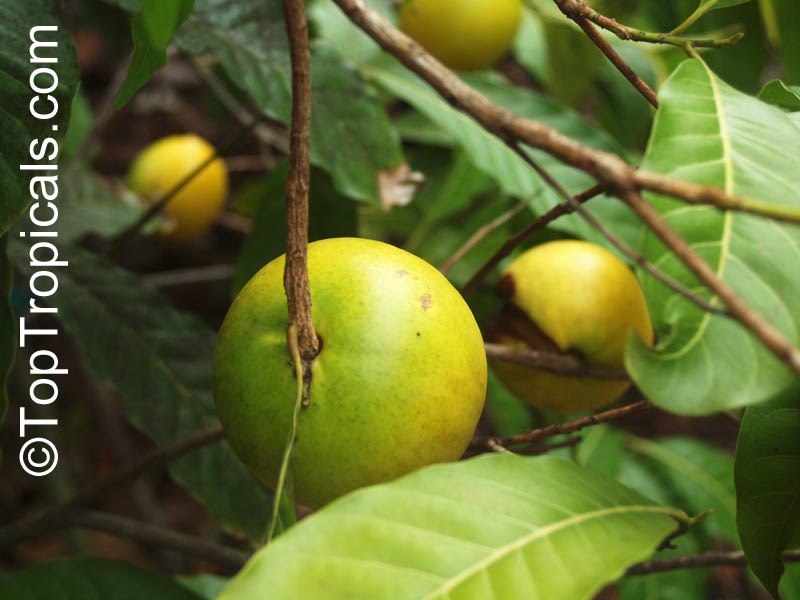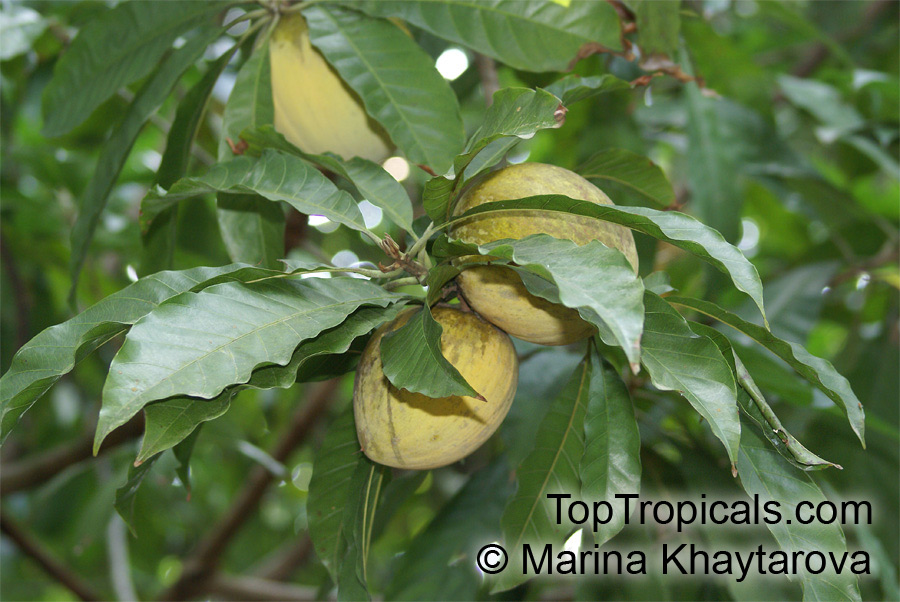Chrysophyllum - Plant Encyclopedia Results
Top Tropicals Plant Encyclopedia
| Number of plants found: 6 |
Botanical name: Chrysophyllum argenteum
Common names: Caimito de mono, Bastard Redwood
Family: Sapotaceae
Origin: South America






The plant is harvested from the wild for its edible fruit, wood and medicinal uses. Edible milky fruit. Leaves very variable in shape.
Botanical names: Chrysophyllum cainito, Achras caimito
Common names: Caimito, Star Apple, Satin Leaf
Family: Sapotaceae
Origin: West Indies





Chrysophyllum cainito, or Caimito, is a beautiful, large tree which can reach heights of more than twenty feet. It is native to the West Indies, but is grown across the world in areas with tropical and subtropical climates. It can be found in the USDA Zone 10-11, and some varieties have been observed to have a cold hardiness at least to the low 30s for short periods. When planted in containers and grown in colder regions, Caimito should be taken inside during the winter. To ensure healthy growth, Caimito should be grown in full sun and require regular watering.
The fruit of the Caimito tree is edible, with a mild grape-like flavor. Not only is it delicious, but it can also be quite nutritious. Caimito is high in Vitamin C and contains several other vitamins and minerals that are important for a healthy diet.
For those looking to embrace gardening and the outdoors, Caimito is an excellent choice. Not only is it beautiful, but it is also productive. The fruit can be eaten fresh, or it can be cooked and used in jams and other applications.
7 gal pot. More developed root system, thicker trunk and branches. Plant height depends on growing season and variety. Dwarf varieties are slow growers and may be shorter. Contact us for exact size description if size/height matters to you. 7 gal plants may be shipped separately from other items by Ground service due to large size. See here time in transit (business days, excluding Sat-Sun!)
Recommended Fertilizer: SUNSHINE C-Cibus - Crop Nutrition Booster
SUNSHINE-Honey - sugar booster
Botanical name: Chrysophyllum gonocarpum
Common name: Guatambu-De-Leite
Family: Sapotaceae
Origin: Tropical America




Native to tropical America, Chrysophyllum gonocarpum is a small tree that grows to a height of 10-20 feet, making it an ideal choice to plant as a small specimen or as an ornamental tree when space is limited. It has a short trunk and a dense, round canopy.
The leaves of Chrysophyllum gonocarpum are a dull green, spirally arranged, and are 2-4 cm long and 1-1.5 cm wide. The flowers are small and white, appearing in clusters. The fruits that follow are yellow-green, subglobular and covered in grooves, resembling a miniature lime. The flesh of the fruits are fragrant and sweet.
Chrysophyllum gonocarpum enjoys full sun, with some shade in the warmer months and requires regular watering. Also known as Guatambu-De-Leite, this small tree is hardy in USDA Zones 9-11 and can flourish in coastal areas, as it is tolerant of salt spray.
For those who live in cooler regions and would like to grow Chrysophyllum gonocarpum, it can be grow in a container in a bright location indoors. When brought indoors, regular watering is key, as well as good drainage. Pruning can also be done to keep the tree in a more compact shape and to maintain a neat appearance. It is also important to keep the soil evenly moist, but not soggy, as over-watering can lead to root-rot. Another factor to consider when growing Chrysophyllum gonocarpum in a container is periodic feeding with a slow-release fertilizer.
Recommended Fertilizer: SUNSHINE C-Cibus - Crop Nutrition Booster
SUNSHINE-Honey - sugar booster
This item can not be shipped. Pick up only. We can provide local delivery around Ft. Myers or Sebring, Florida. Contact us for an estimate. Non-pickup orders are subject to restocking fees.
Last one
Botanical name: Chrysophyllum imperiale
Common name: Chrysophyllum
Family: Sapotaceae
Origin: South America






Botanical name: Chrysophyllum oliviforme
Common names: Satinleaf, Satin Leaf
Family: Sapotaceae
Origin: Caribbean




This is a relative of Star Apple (Caimito - Chrysophyllum cainito) which is a popular fruit, well known among the people of the Caribbean. The fruit of the Satinleaf is much smaller than the Caimito, just a little dark purple berry, about an inch in diameter. Satinleaf is an ornamental medium-sized tree with a mature height of up to 30 feet and distinctive foliage: shiny olive on top, silky silvery gold underneath. You might use one in your backyard as a shade tree, an easier-to-manage alternative to live oak.
Botanical name: Pouteria caimito
Common names: Abiu, Abu, Caimito
Family: Sapotaceae





Pouteria caimito (Abiu) is an evergreen fruit tree from the Amazon Basin, producing bright yellow fruits about the size of a medium apple.
What makes Pouteria caimito distinct?
It develops a medium sized, dense canopy, matures in three to five years, and can stay productive for more than two decades. The tree performs well in most well drained soils, does not tolerate flooding, and responds well to pruning, which helps manage height and improve early yields.
The fruit has a jelly like, very juicy, sweet and acid free pulp enclosed in a thick skin that releases sticky latex when cut. Its mild flavor resembles Chrysophyllum cainito and usually contains a single elongated seed. It grows best in full sun to light shade and prefers evenly moist, well drained soil. Warm conditions are essential, as the species is sensitive to cold and must be protected from any frost. Suitable for USDA Zones 10-11. Container culture is possible in warm climates, with winter shelter required wherever temperatures may approach unsafe lows.
This plant is very cold sensitive and should be kept at temperature above 50F. We suggest Express shipping for this plant. Please contact us for details.
Recommended Fertilizer: SUNSHINE C-Cibus - Crop Nutrition Booster
SUNSHINE-Honey - sugar booster
This item can not be shipped. Pick up only. We can provide local delivery around Ft. Myers or Sebring, Florida. Contact us for an estimate. Non-pickup orders are subject to restocking fees.
Last one
Use link to repeat this search:
https://toptropicals.com/cgi-bin/garden_catalog/cat.cgi?find=Chrysophyllum&search_op=and&keyword_op=and&language=e&number=10
&no_change_lang=1&user=tt&sale=1&first=0

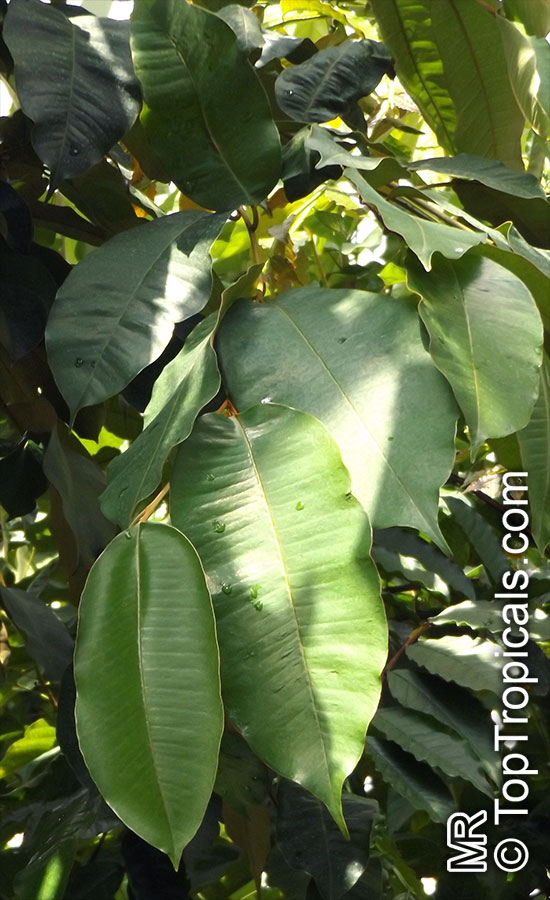
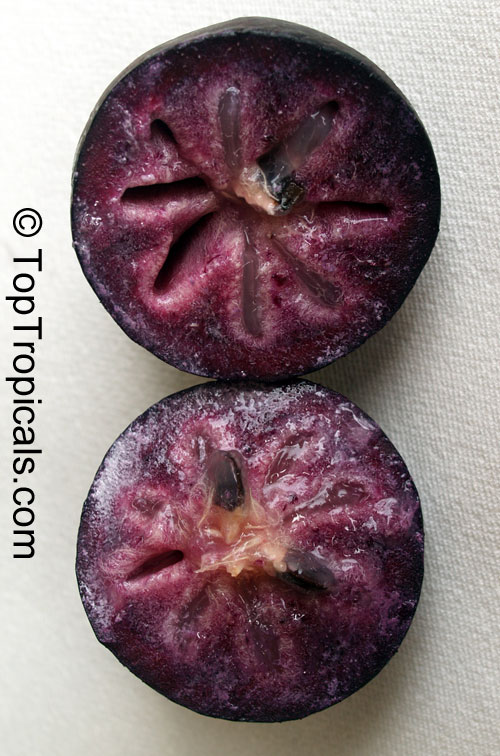
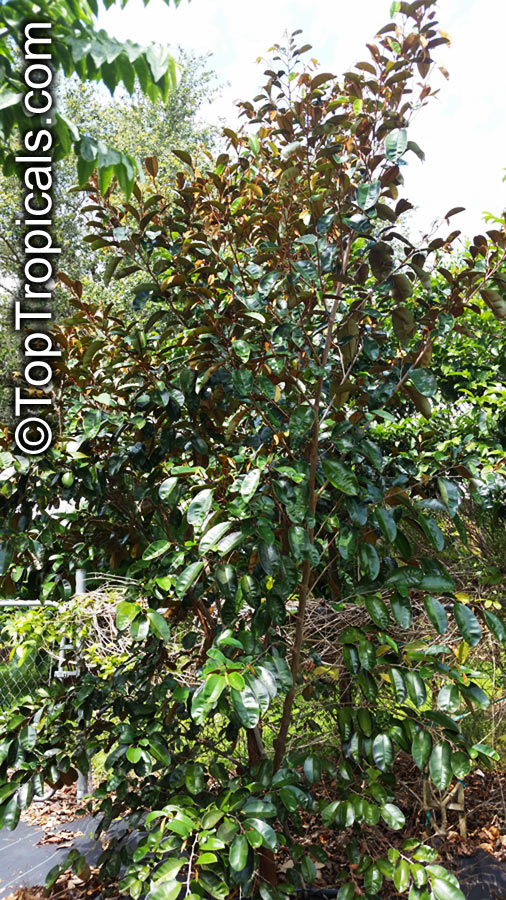
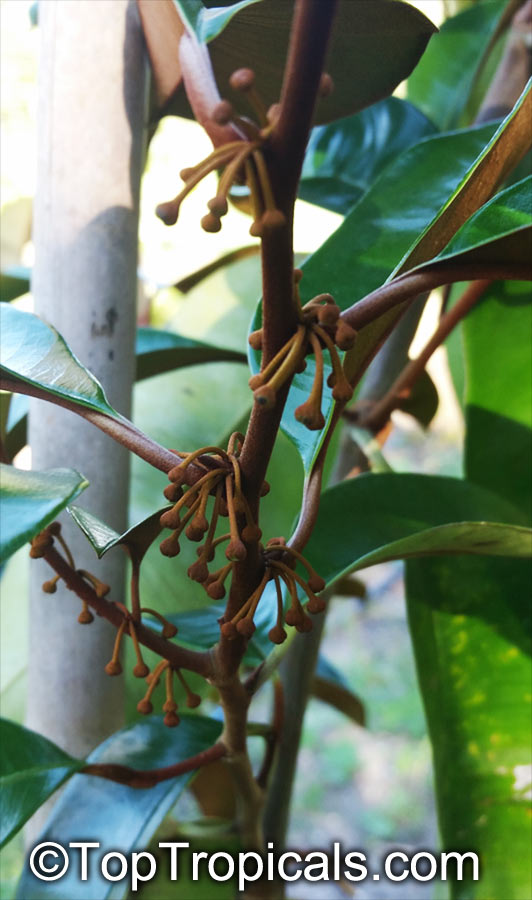

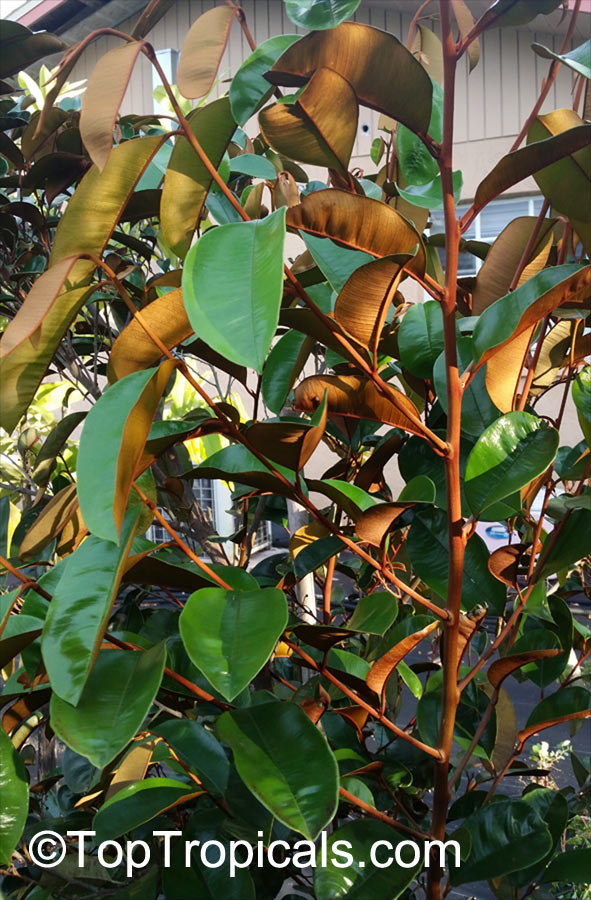
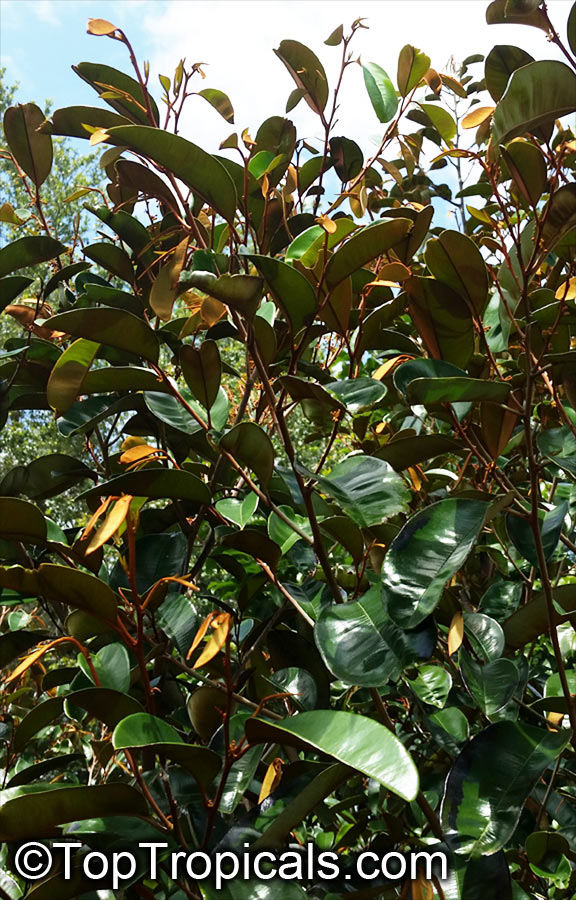
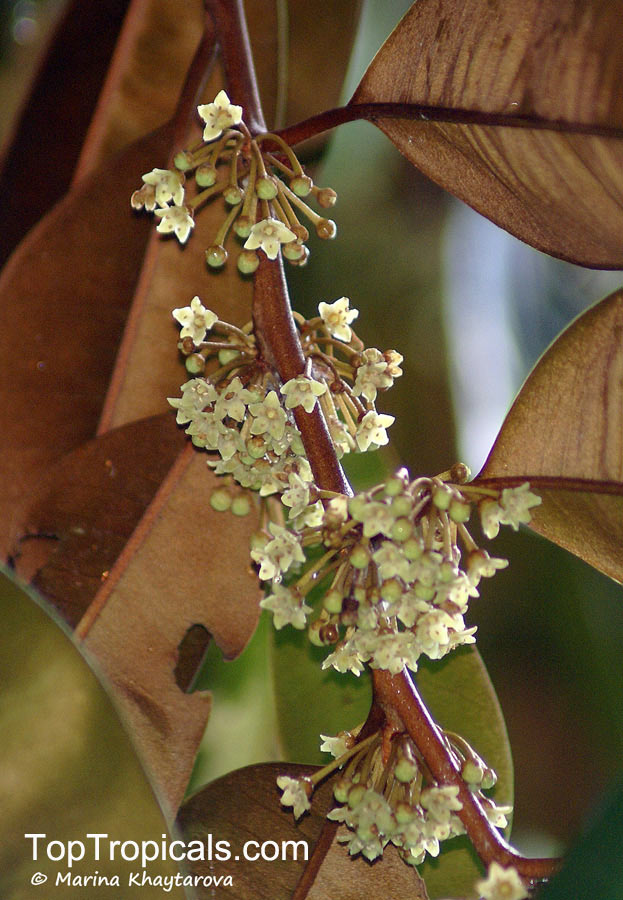
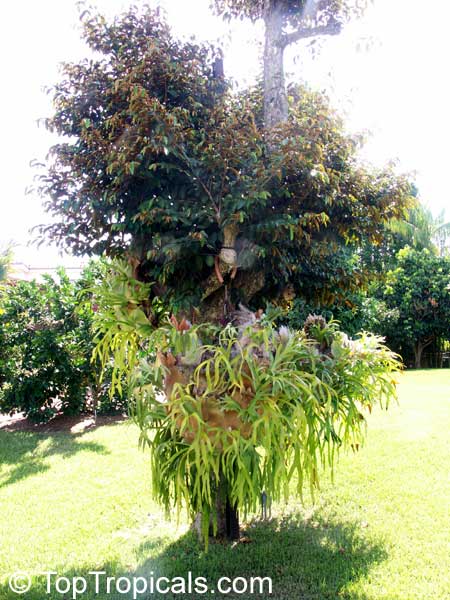
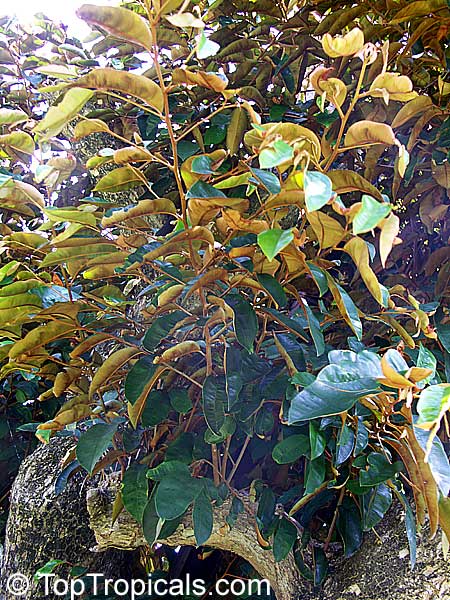
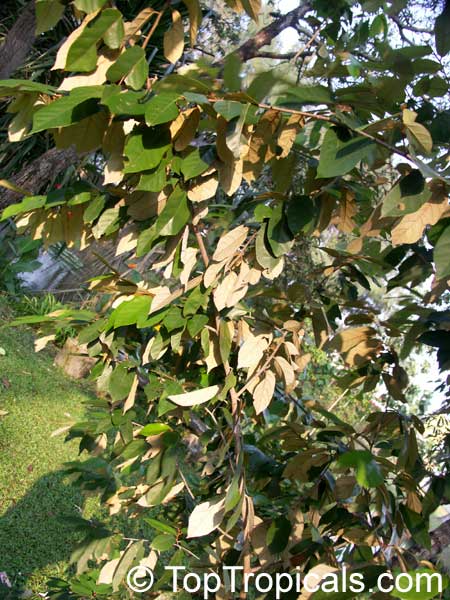
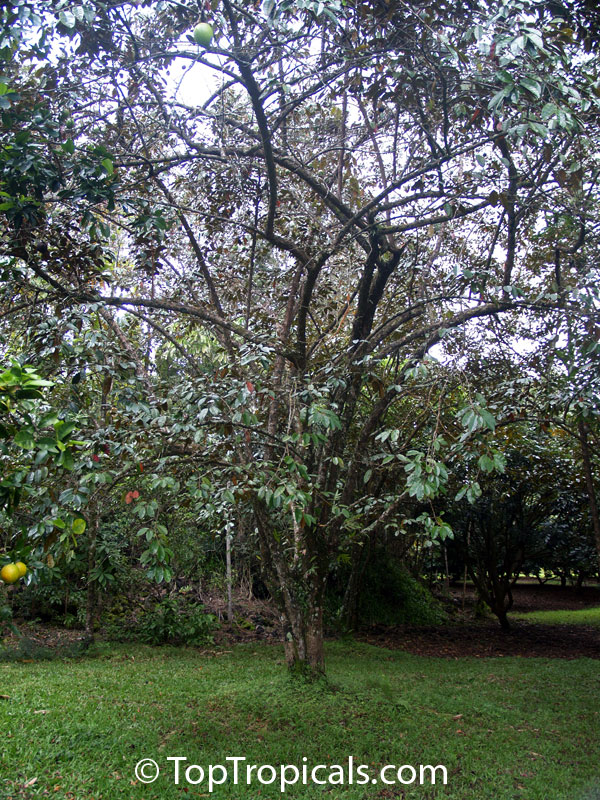
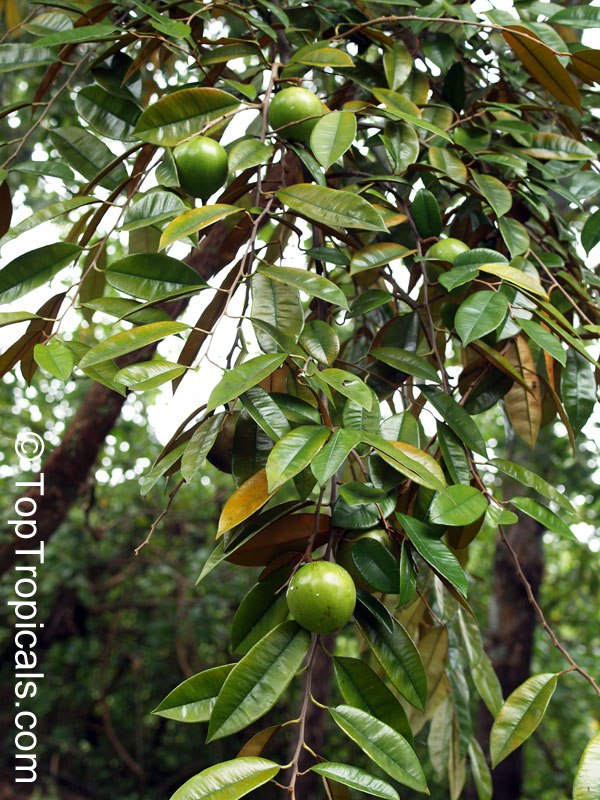

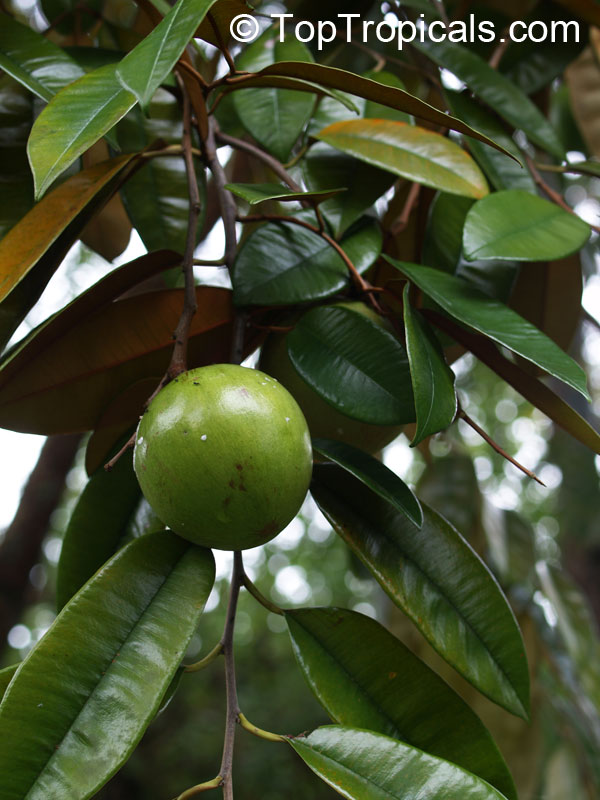

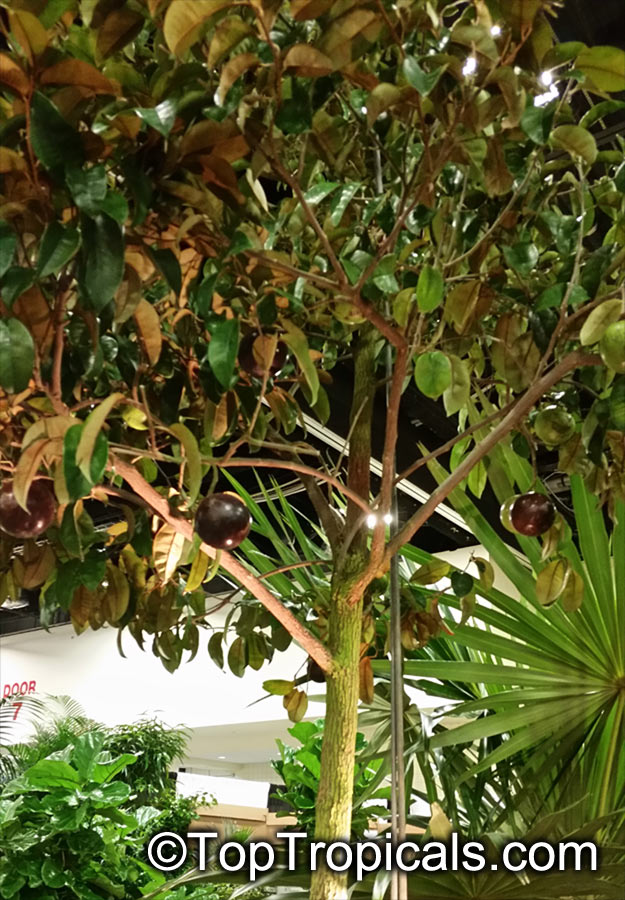
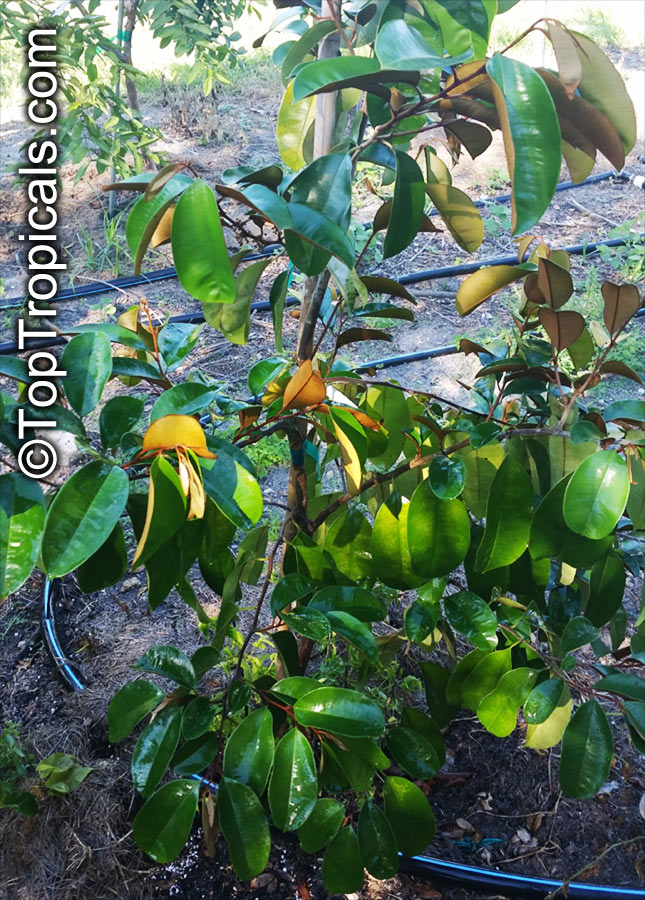
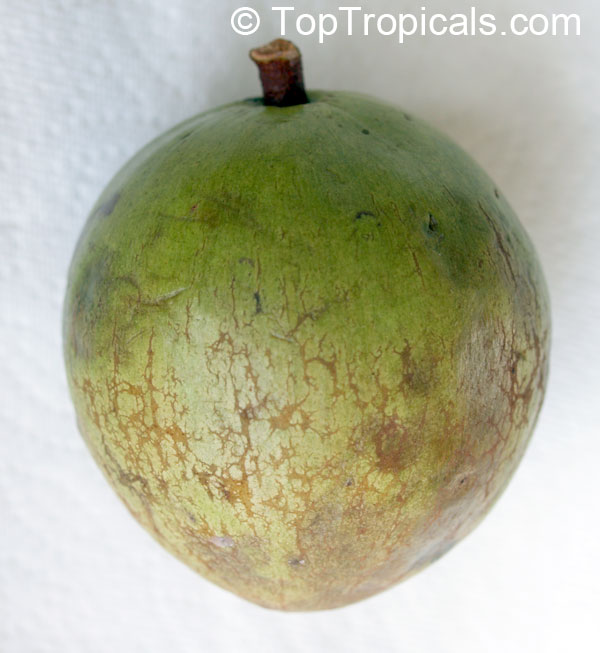
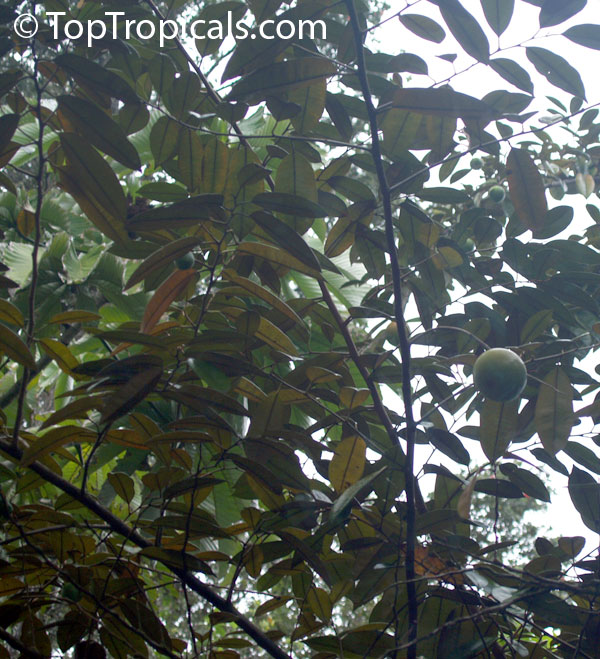

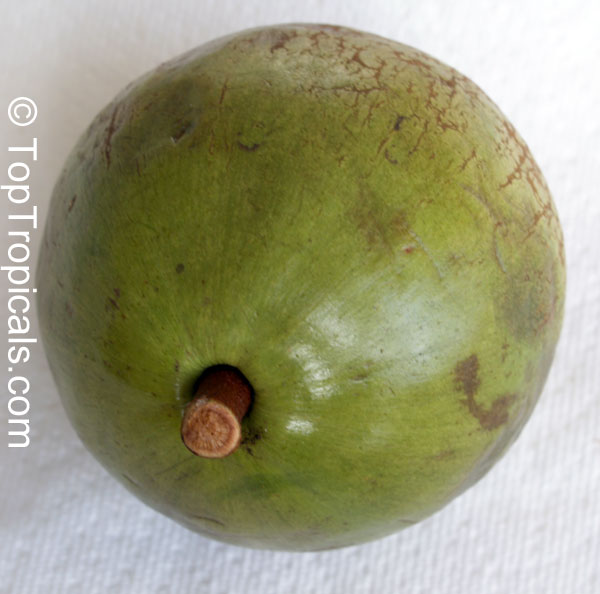

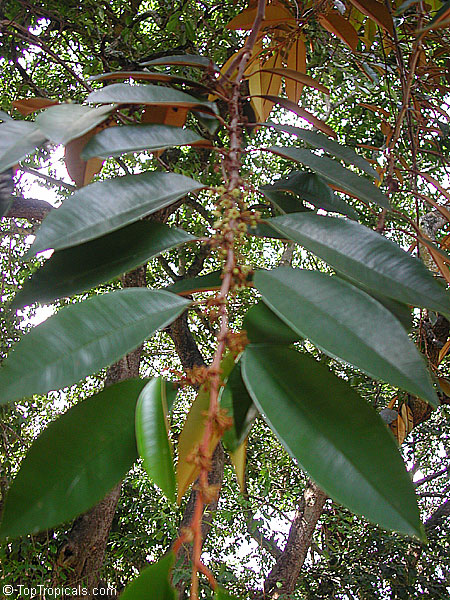

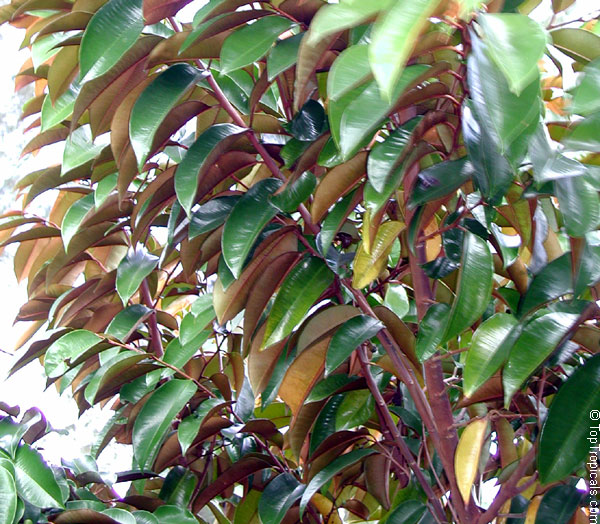
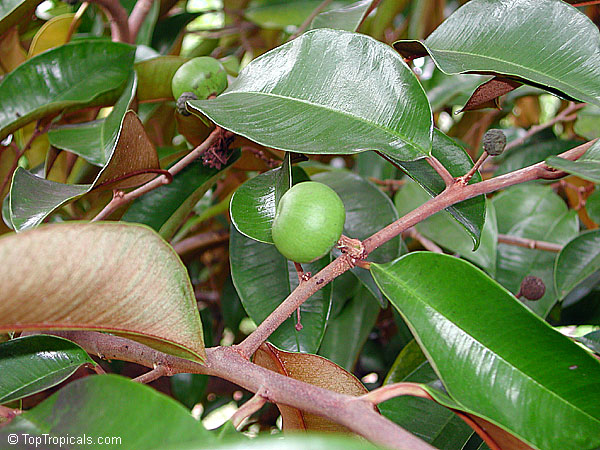
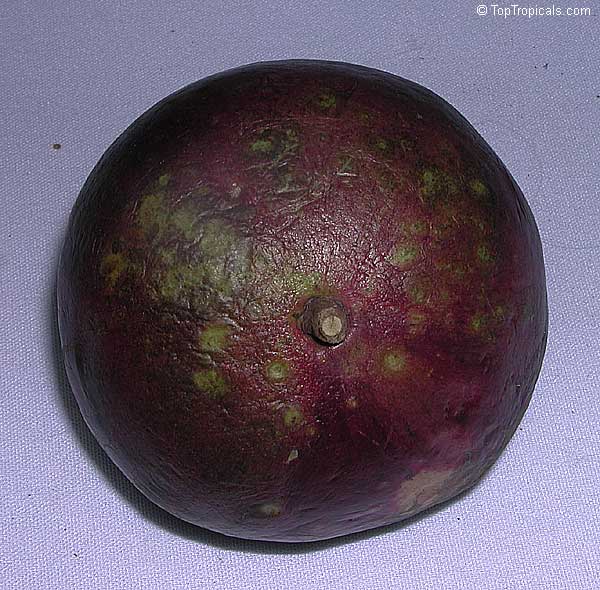
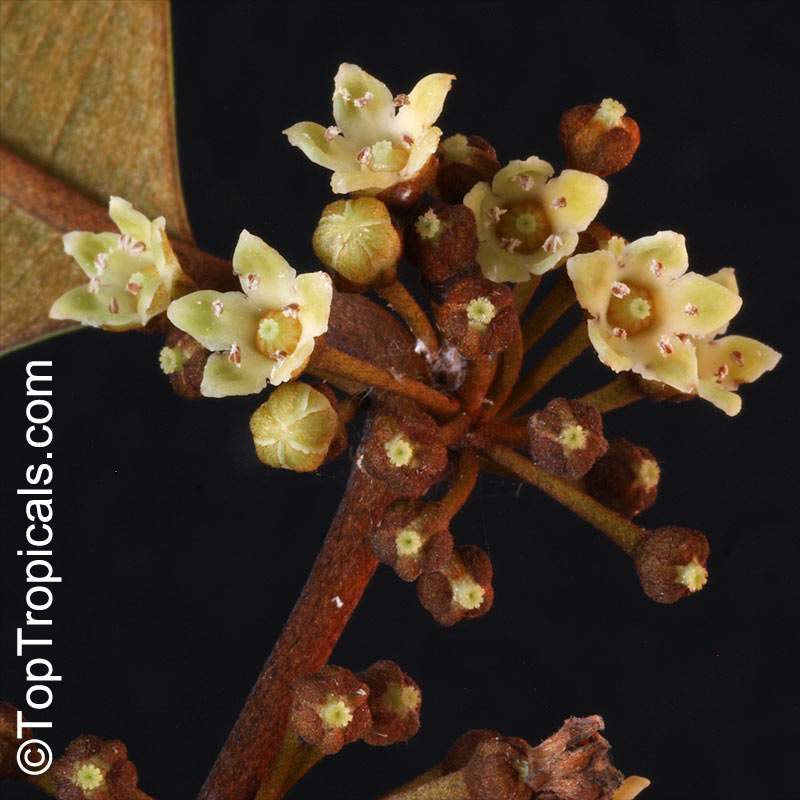

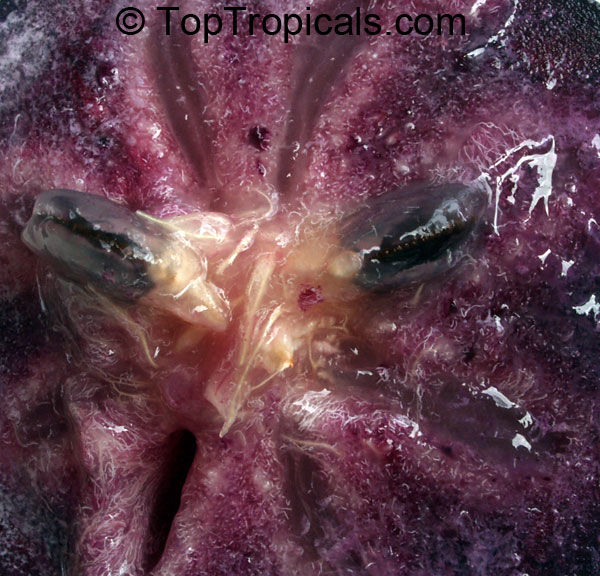
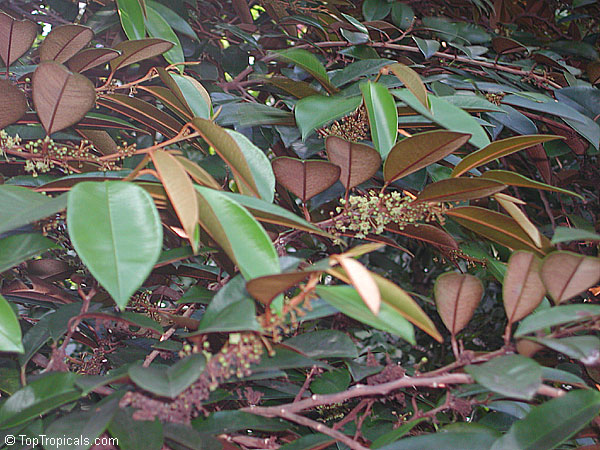
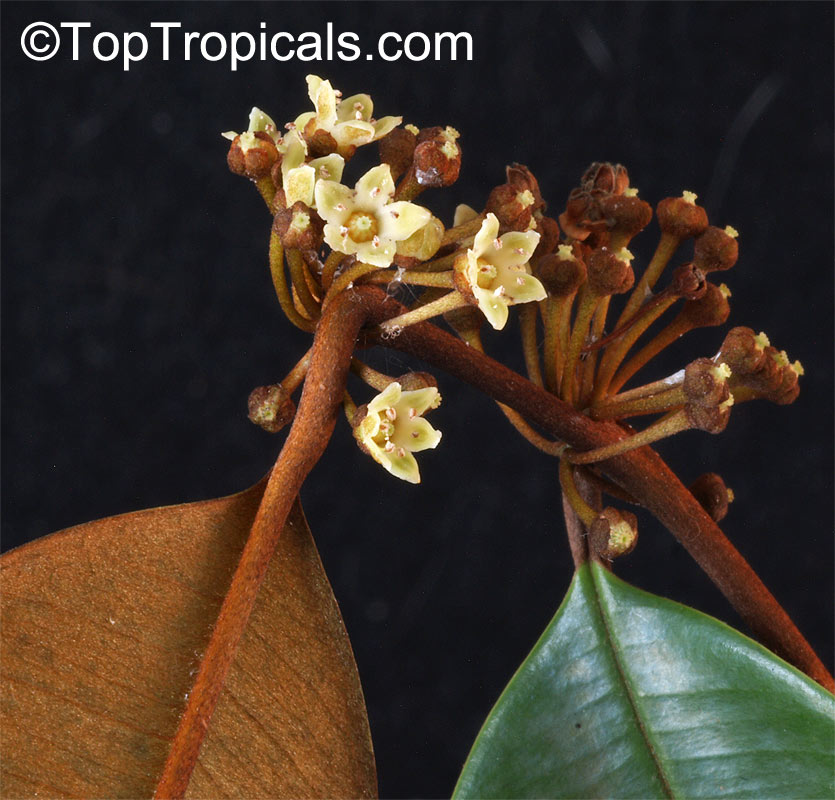

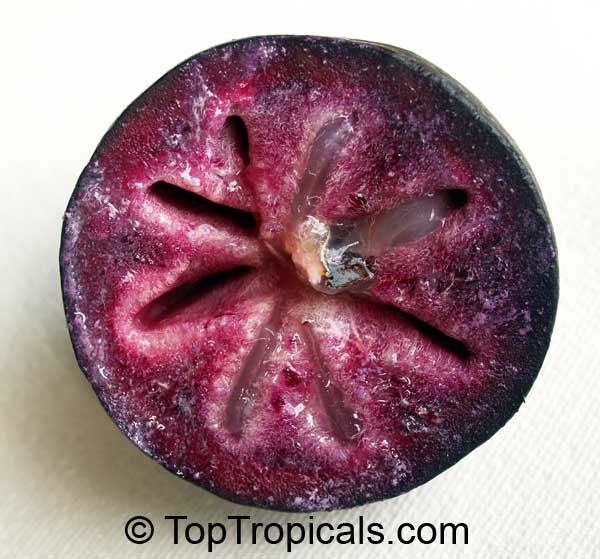
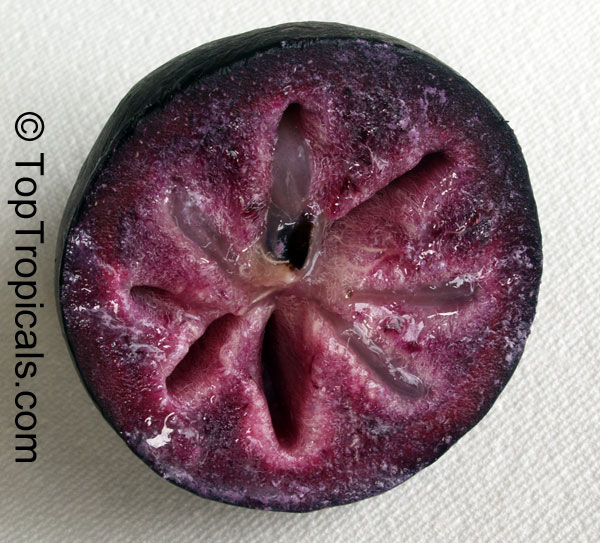
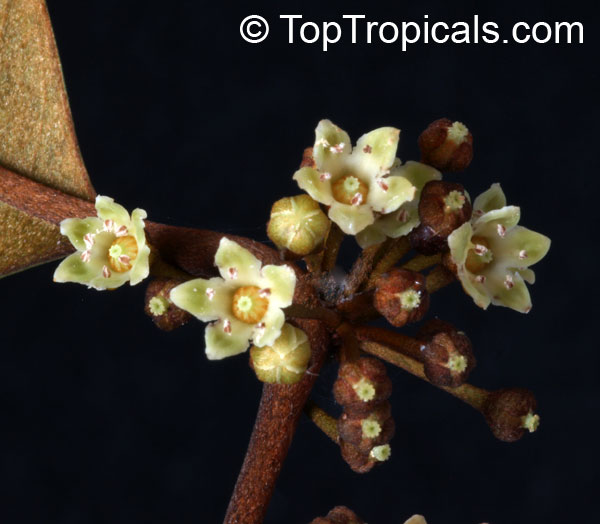
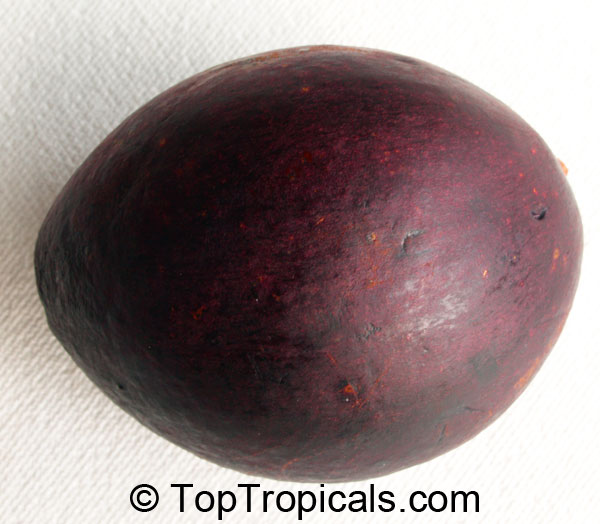
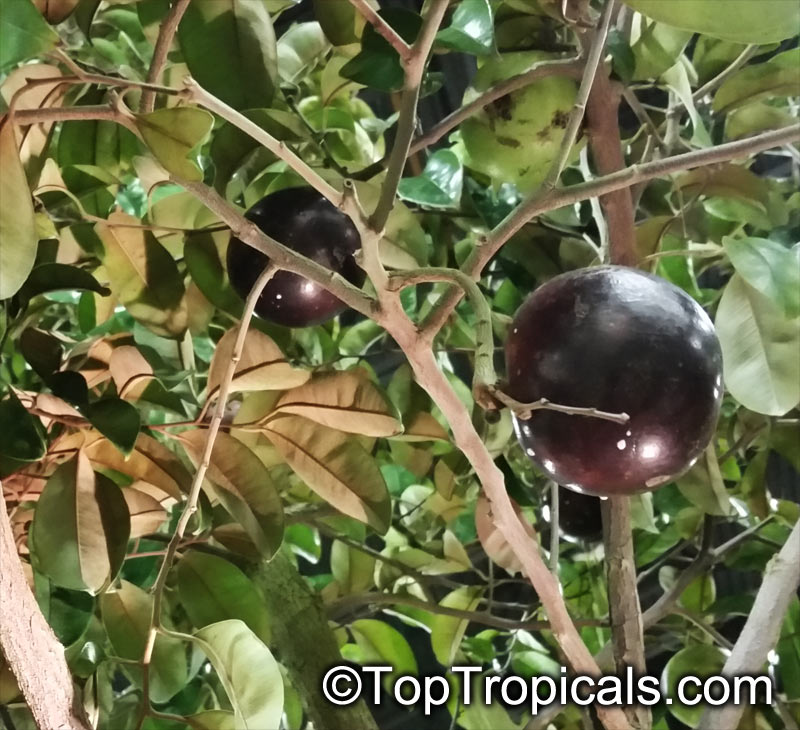



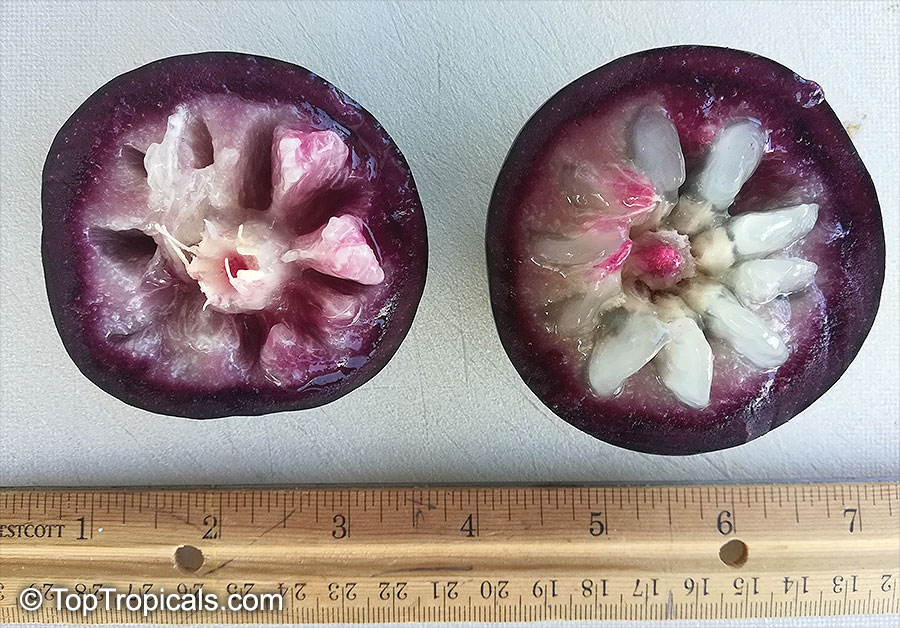
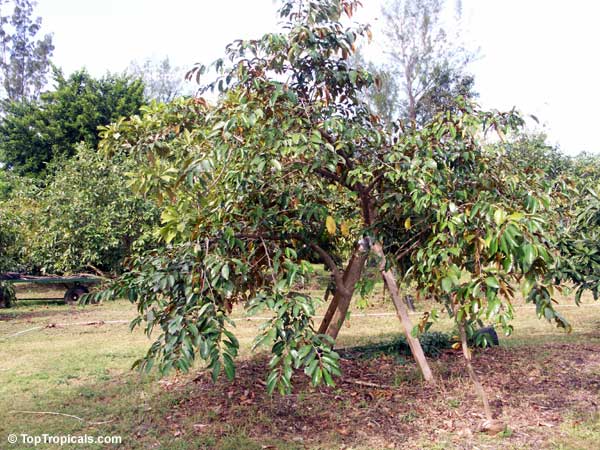

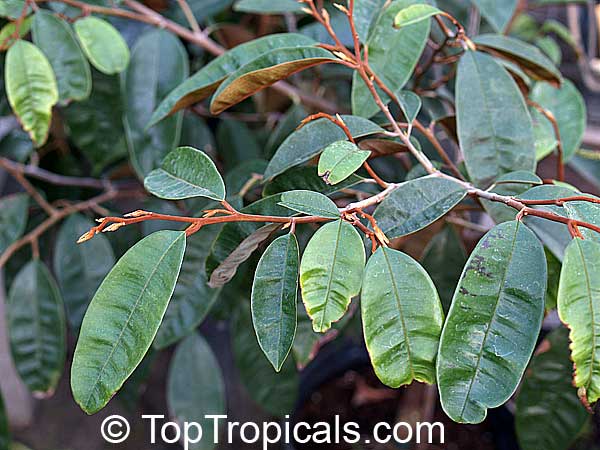



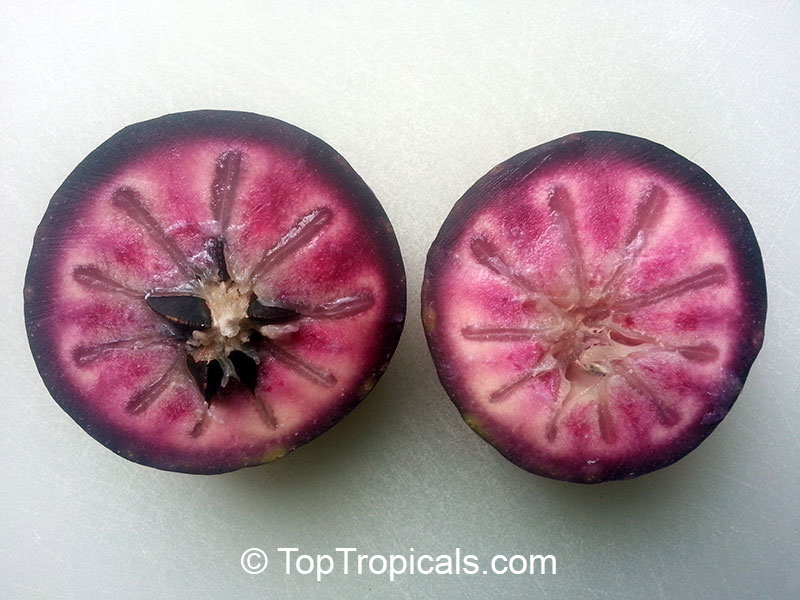

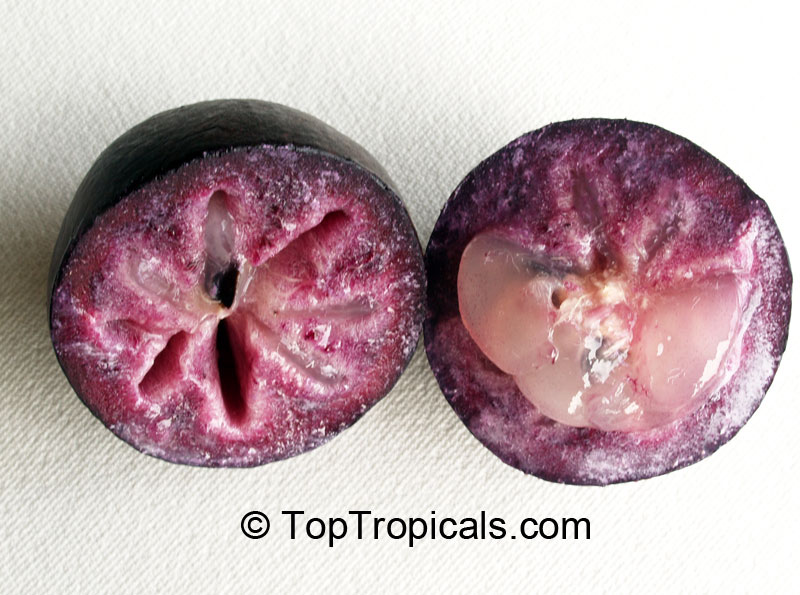
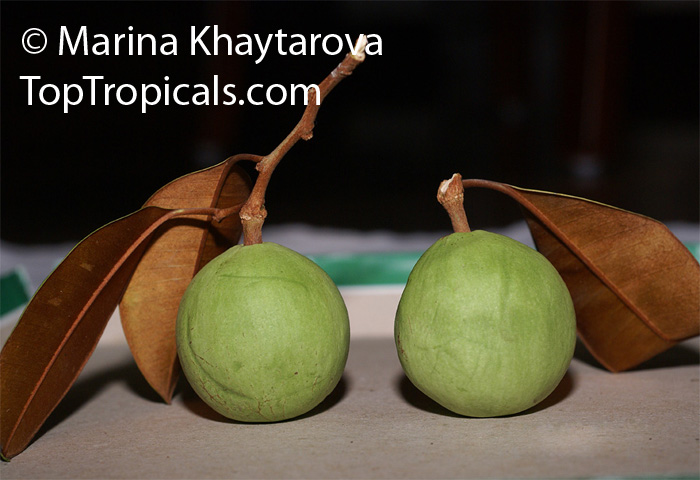
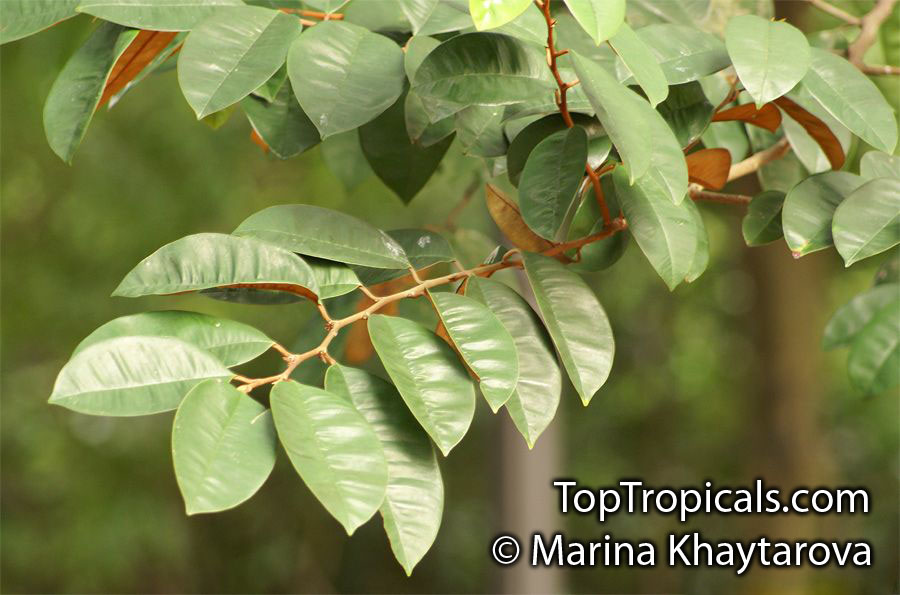
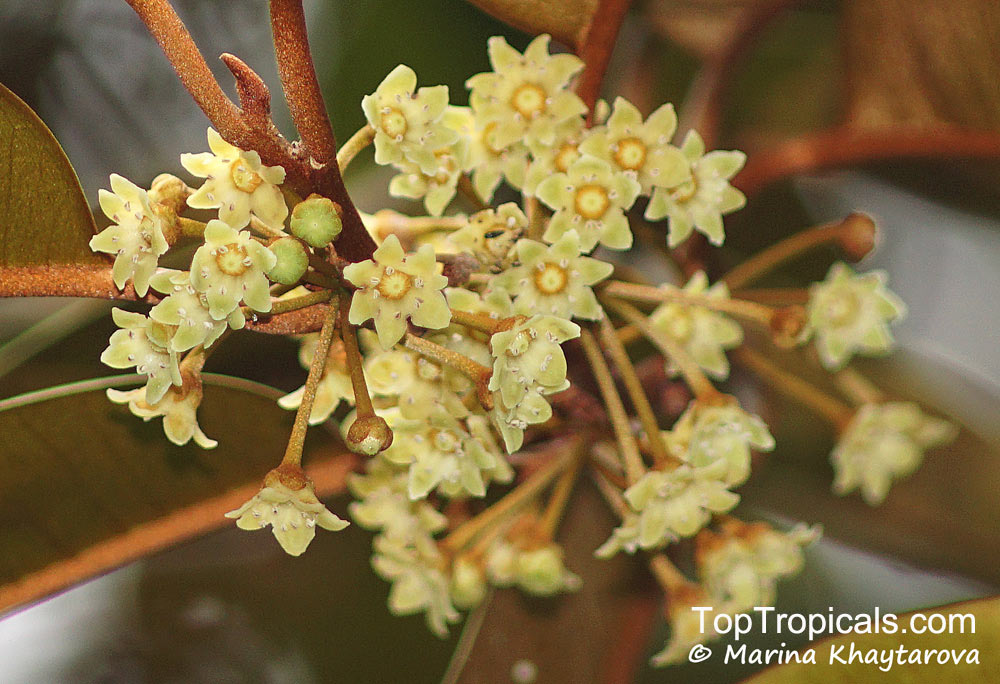
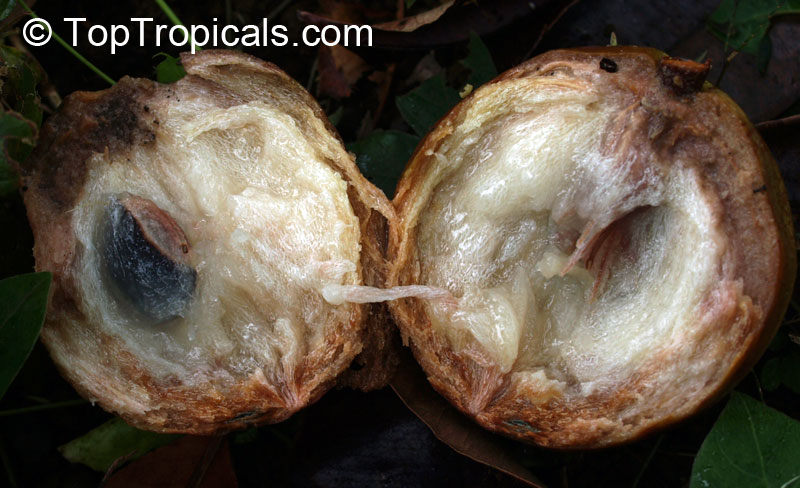

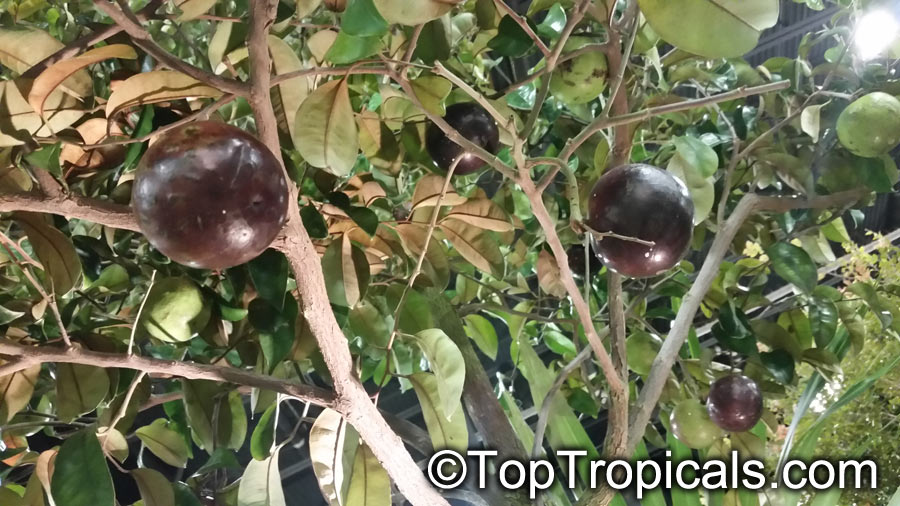


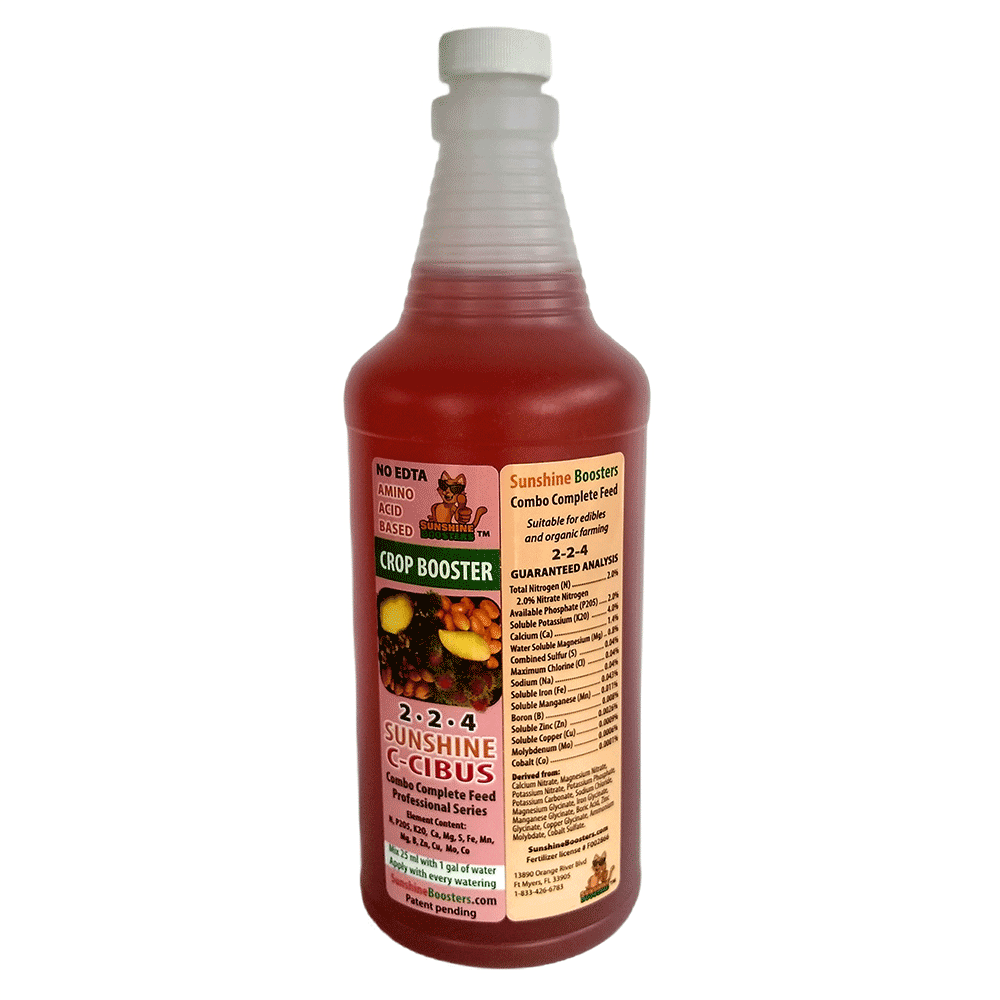 SUNSHINE C-Cibus (NPK 2-2-4) - Crop Booster for every watering.
SUNSHINE C-Cibus (NPK 2-2-4) - Crop Booster for every watering.  SUNSHINE C-Cibus (NPK 2-2-4) - Crop Booster for every watering.
SUNSHINE C-Cibus (NPK 2-2-4) - Crop Booster for every watering. 